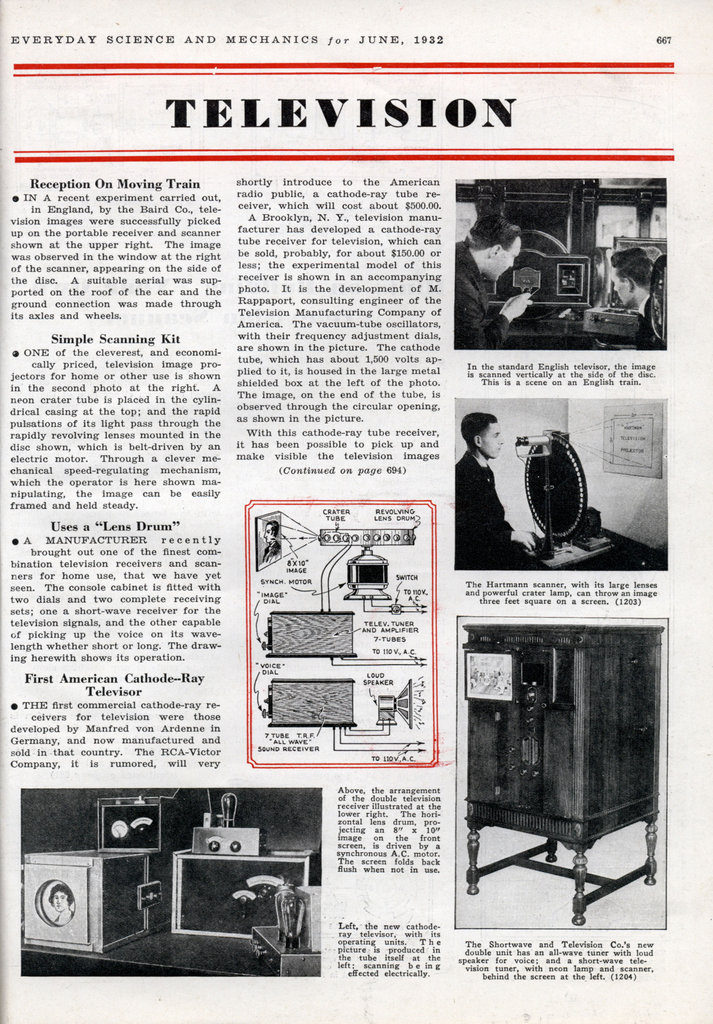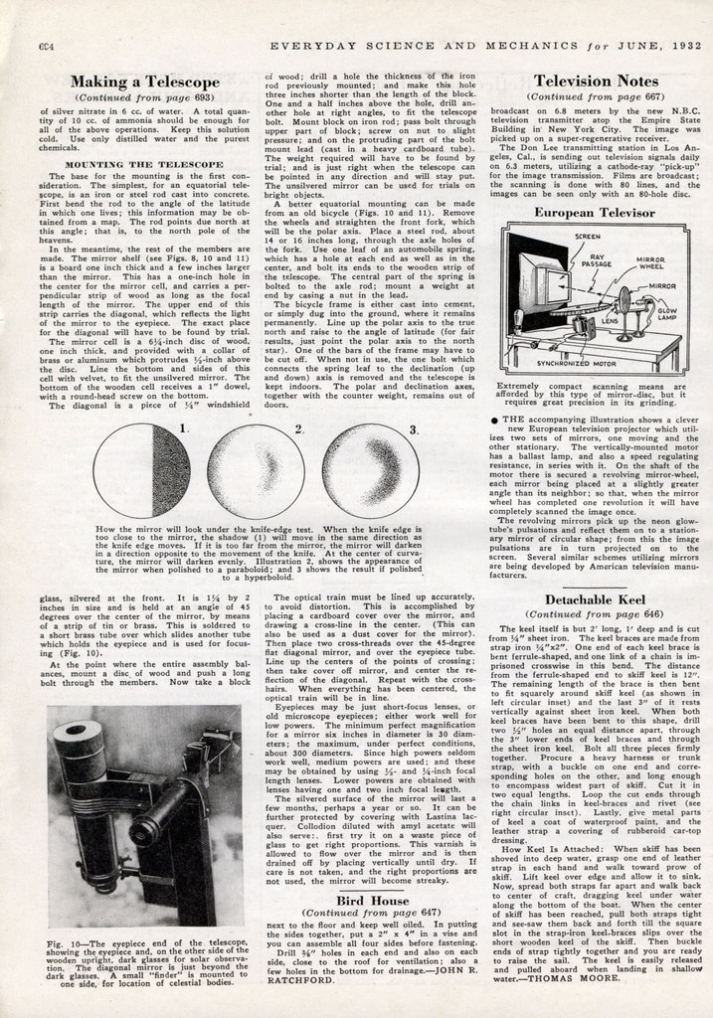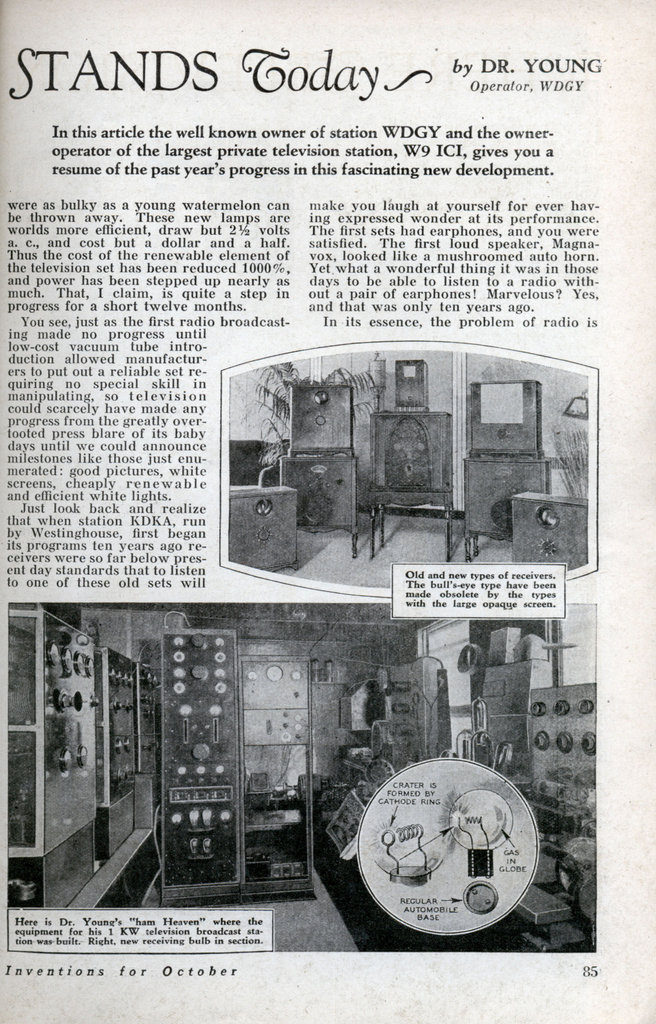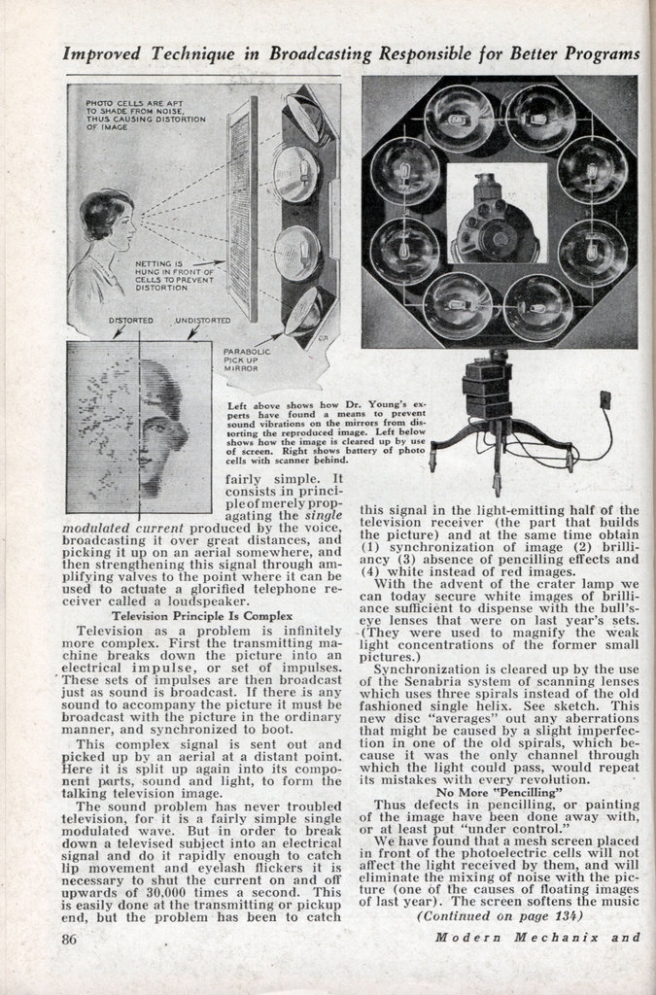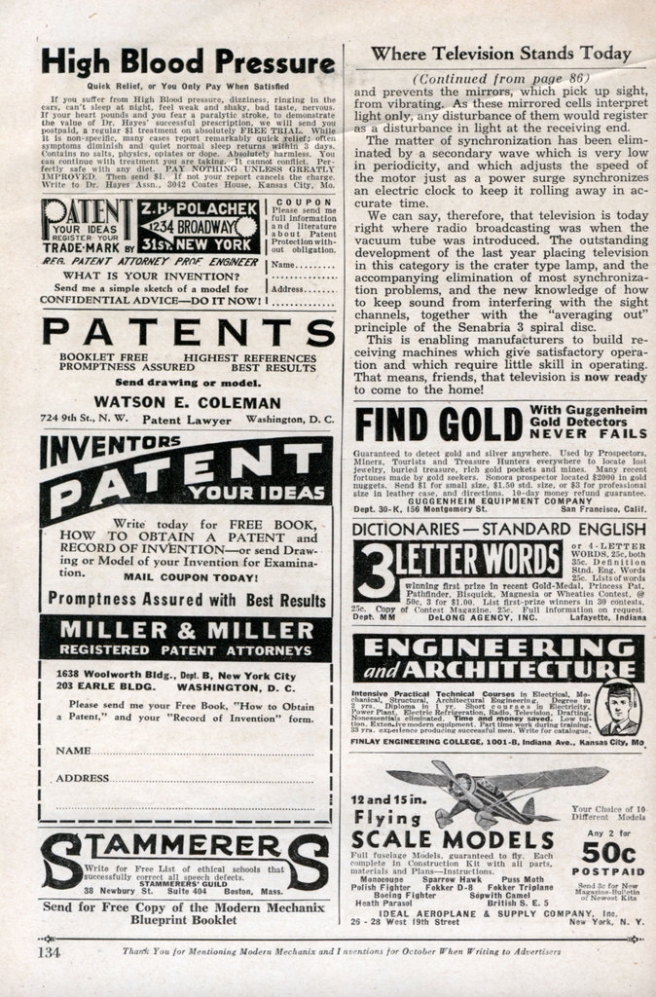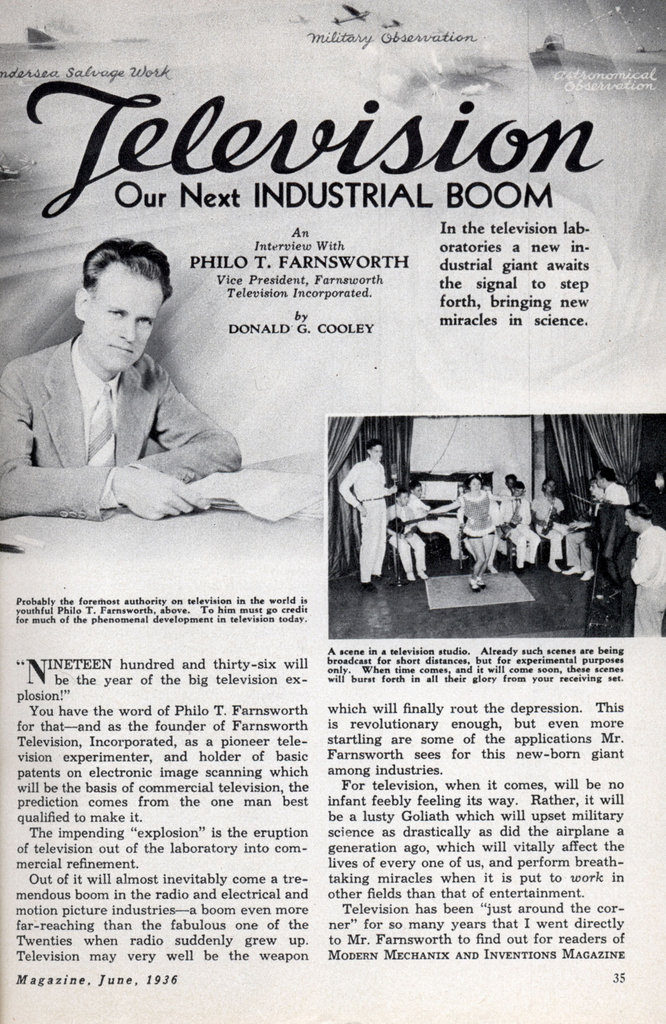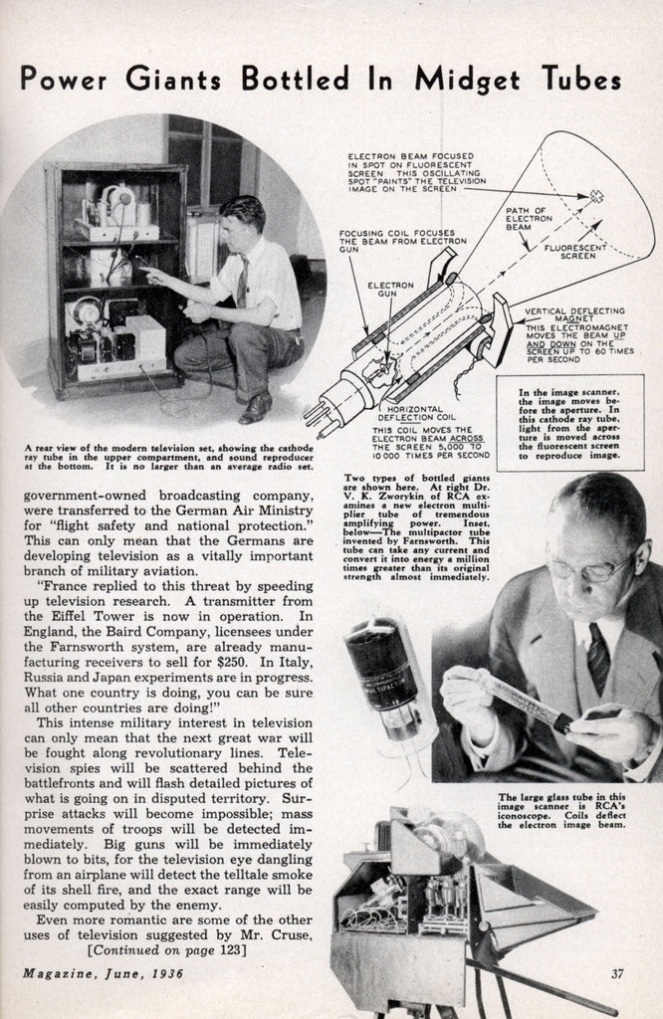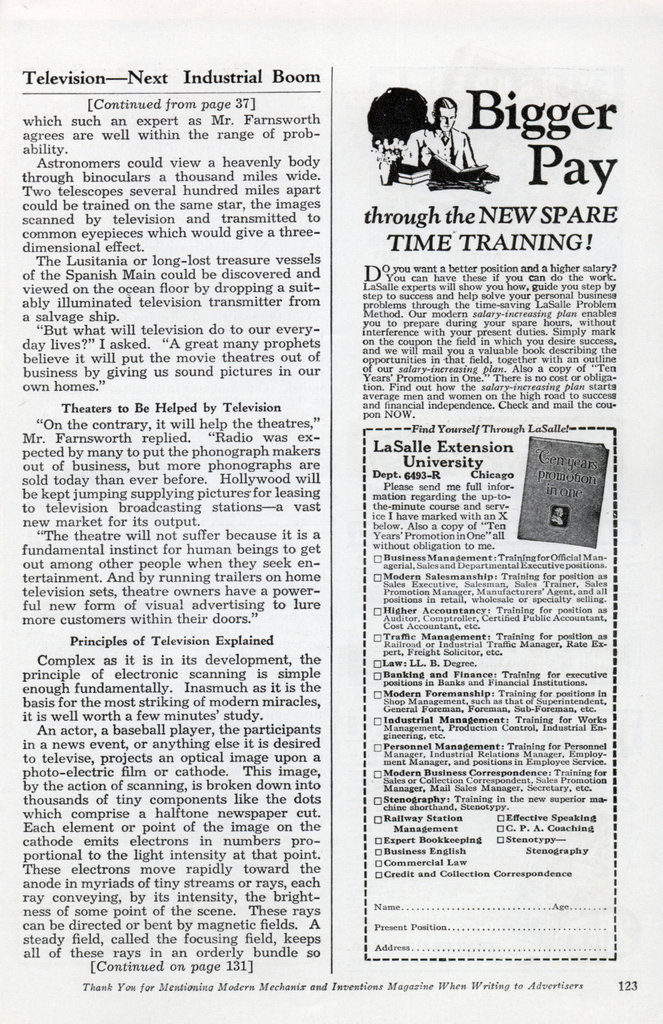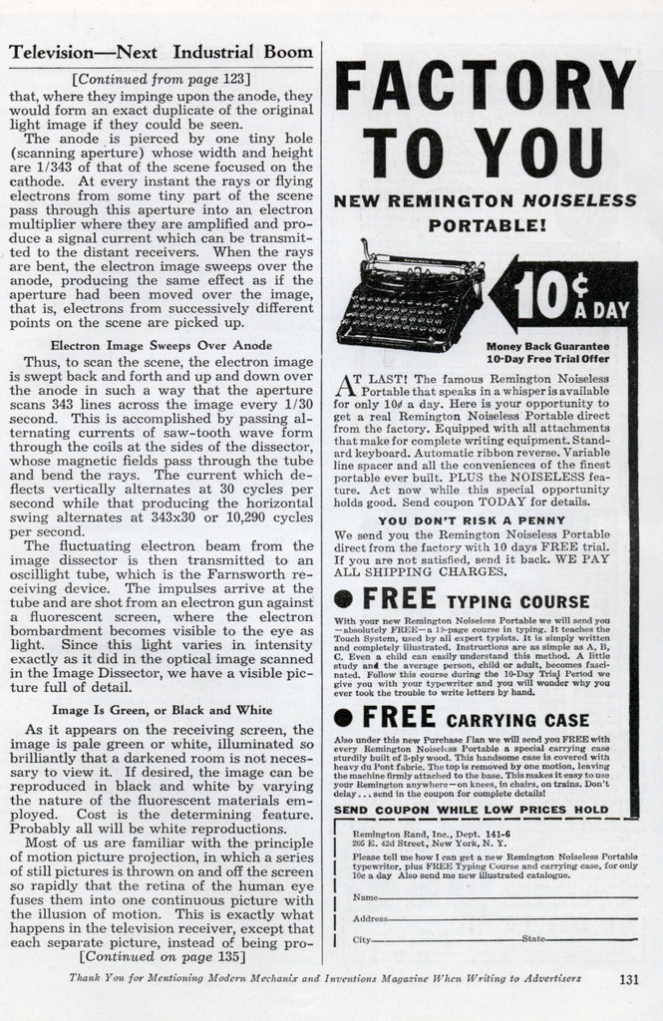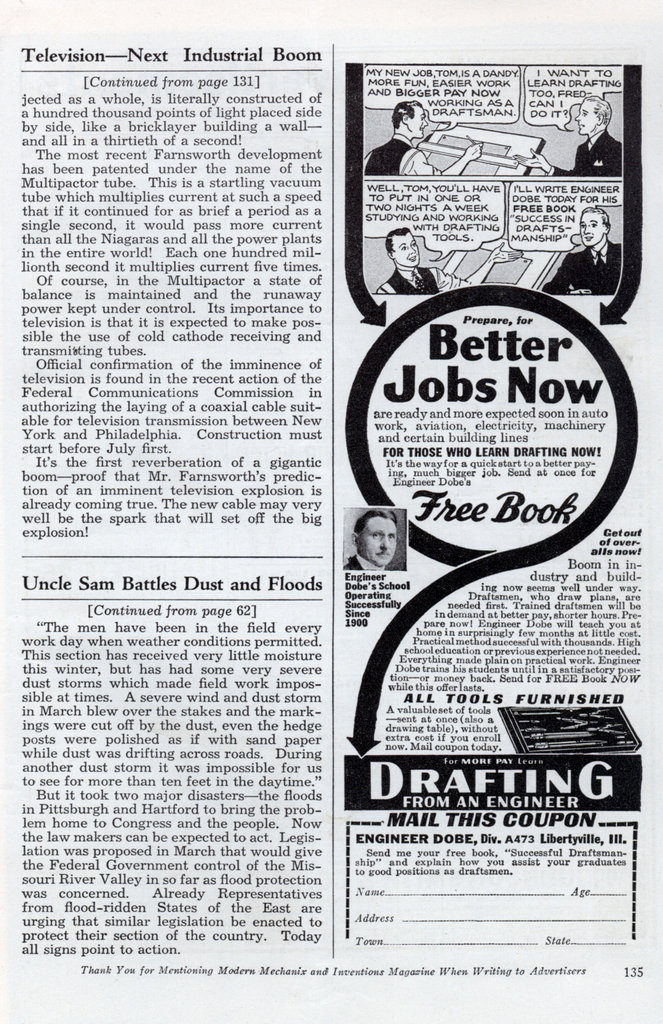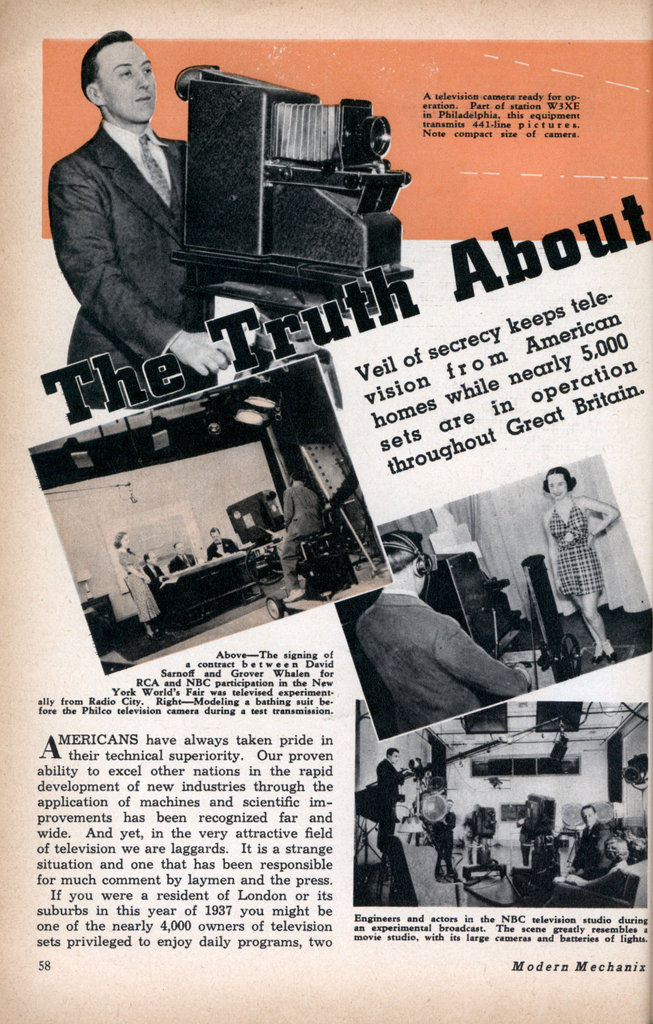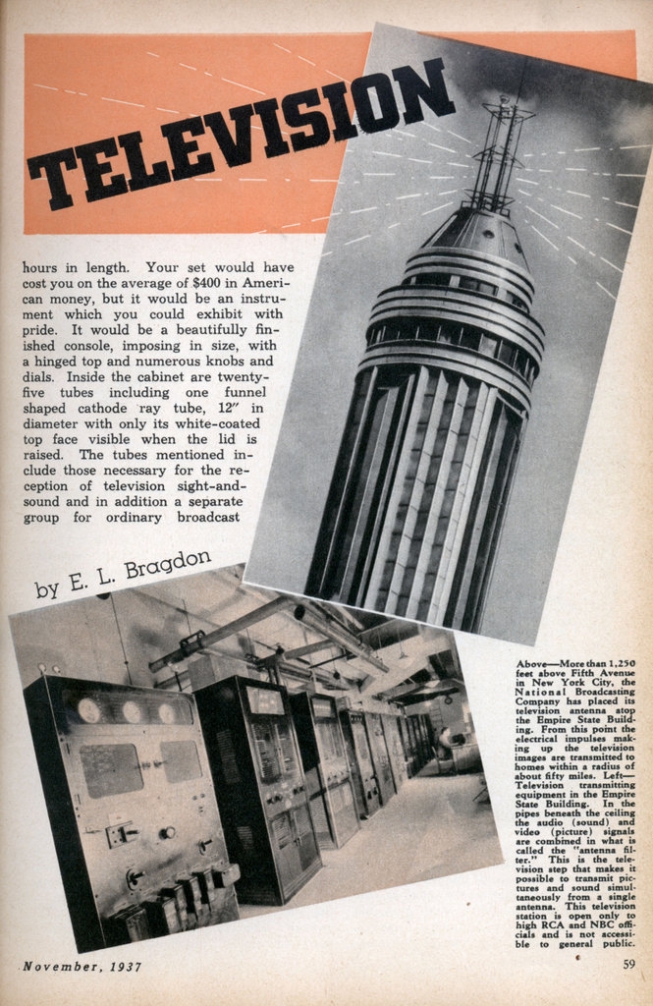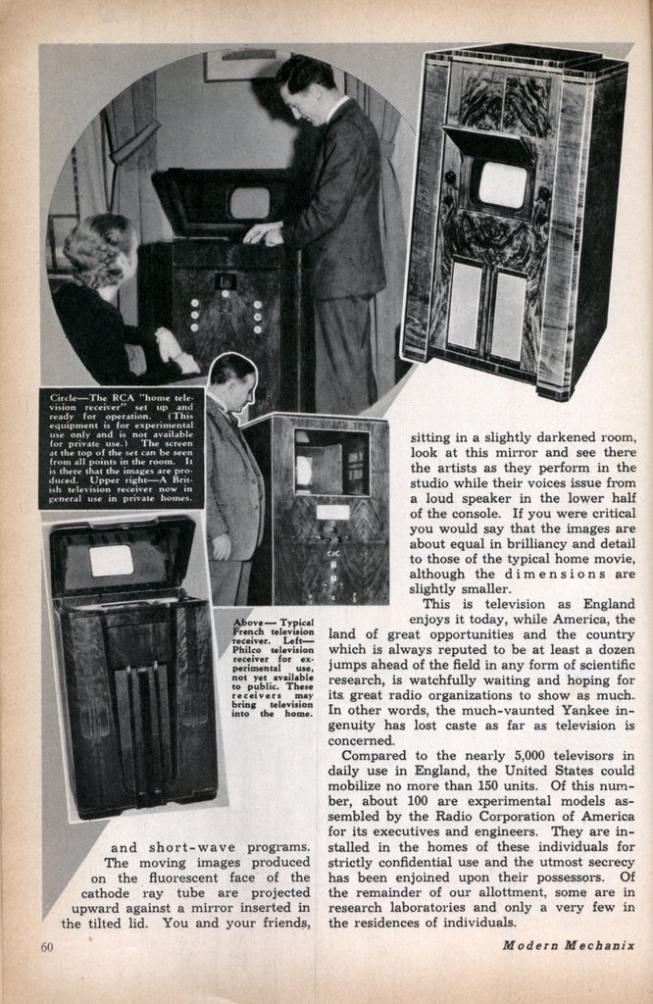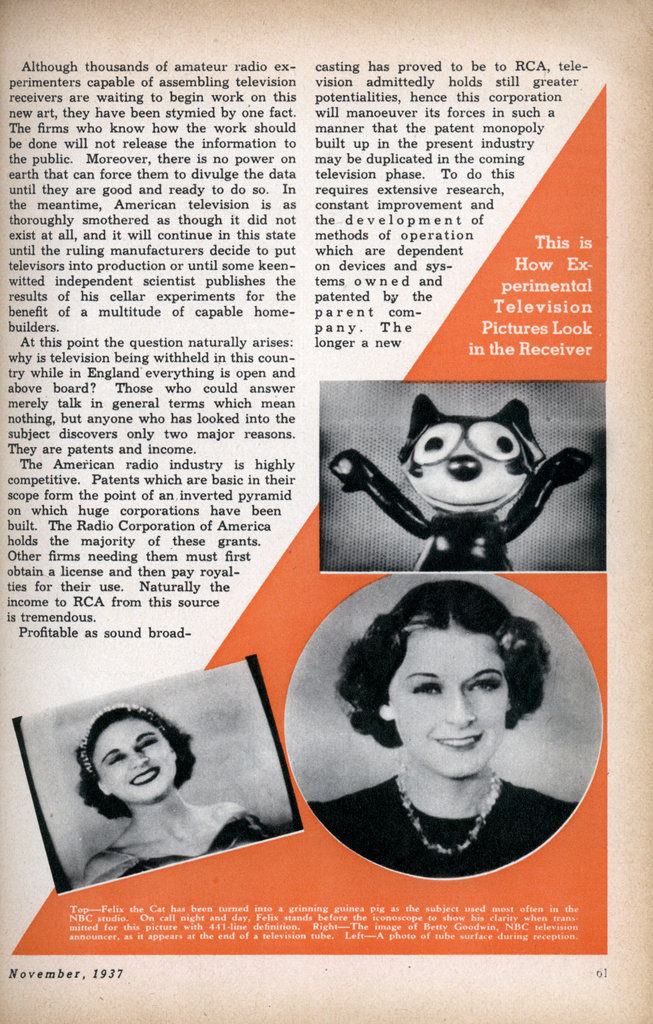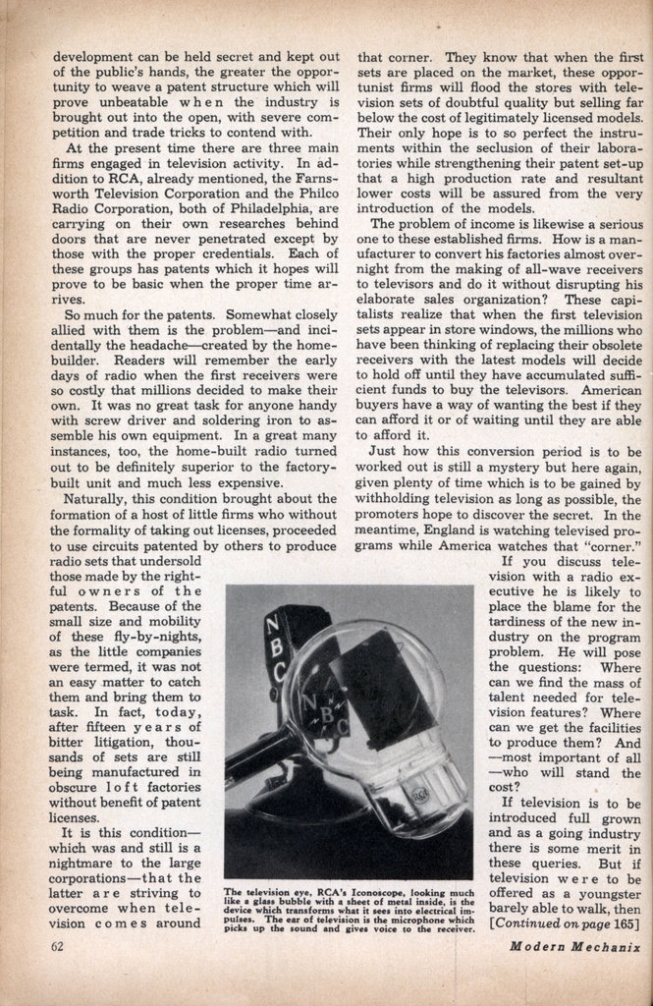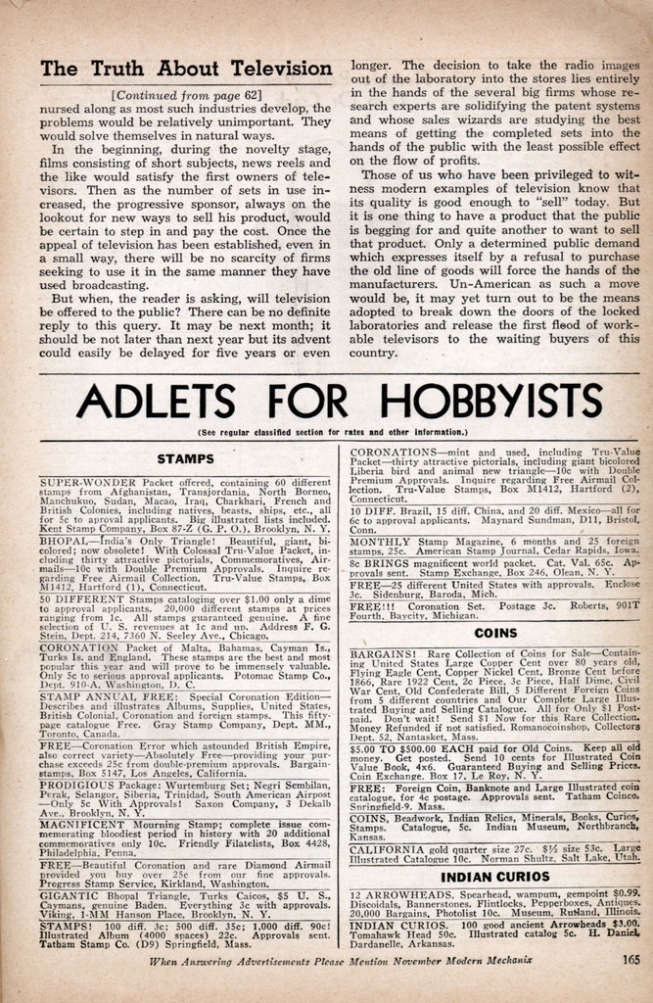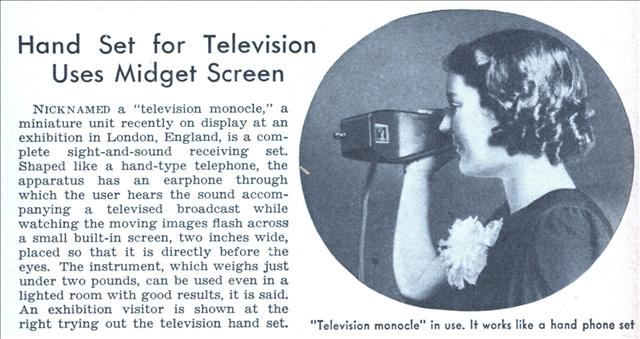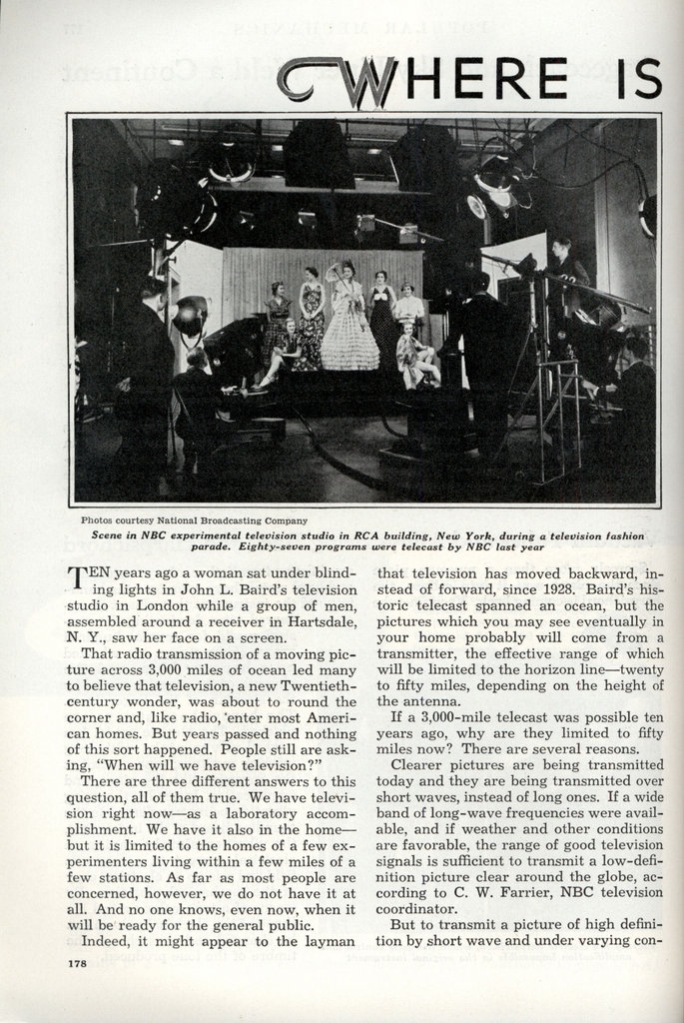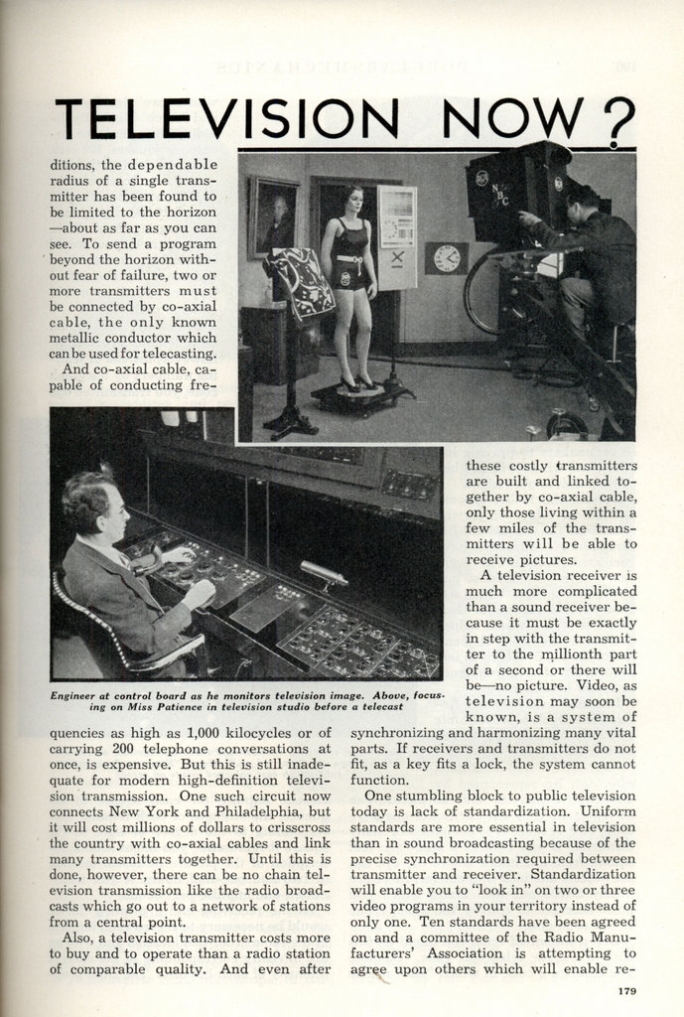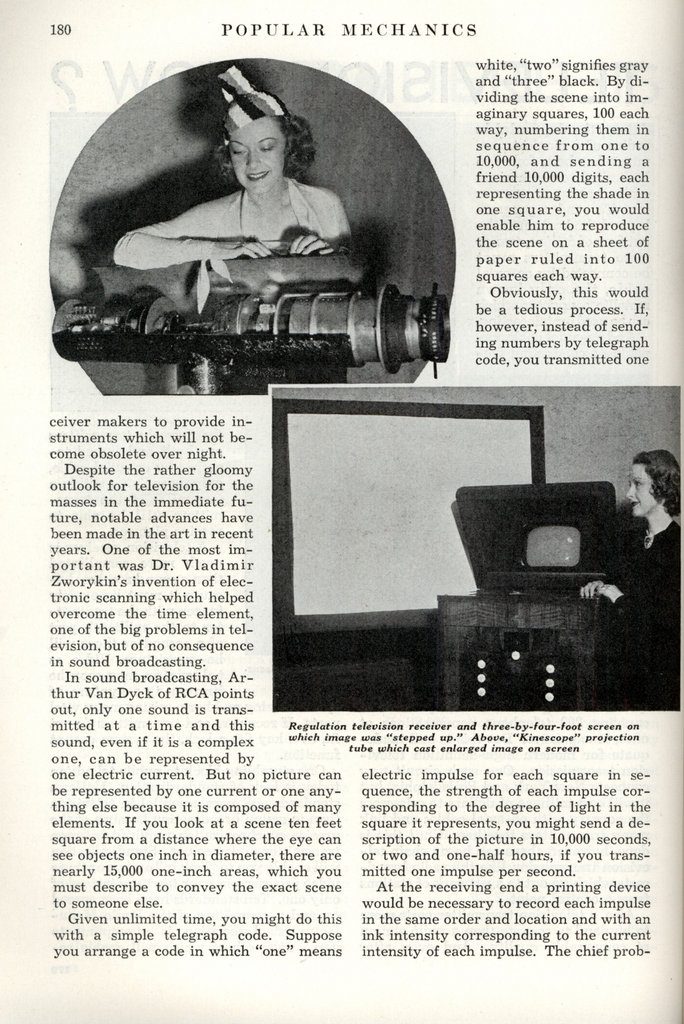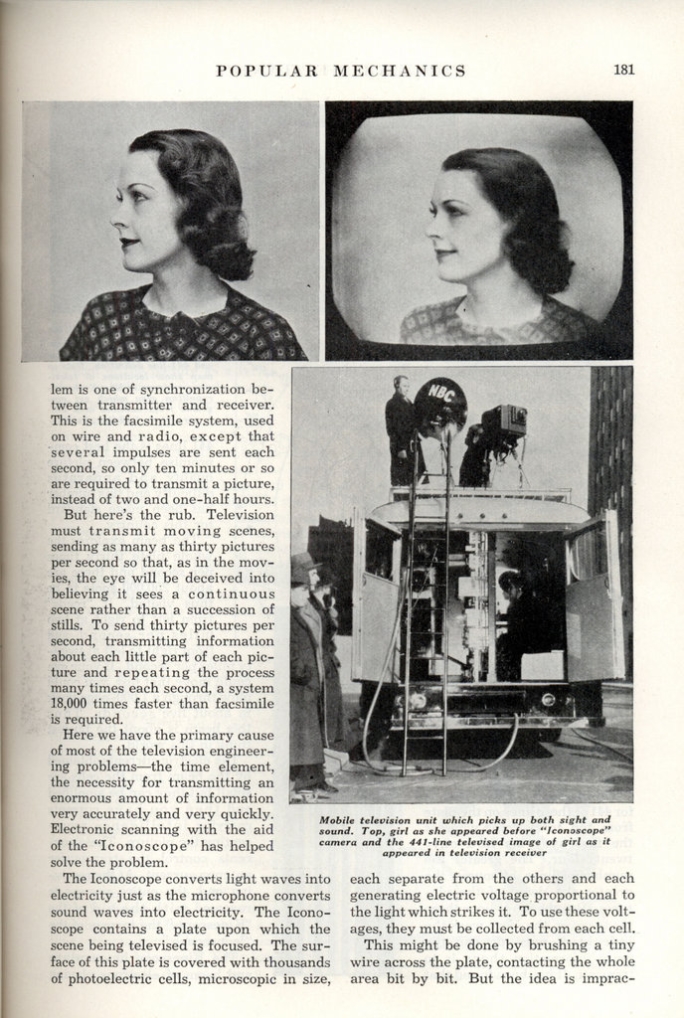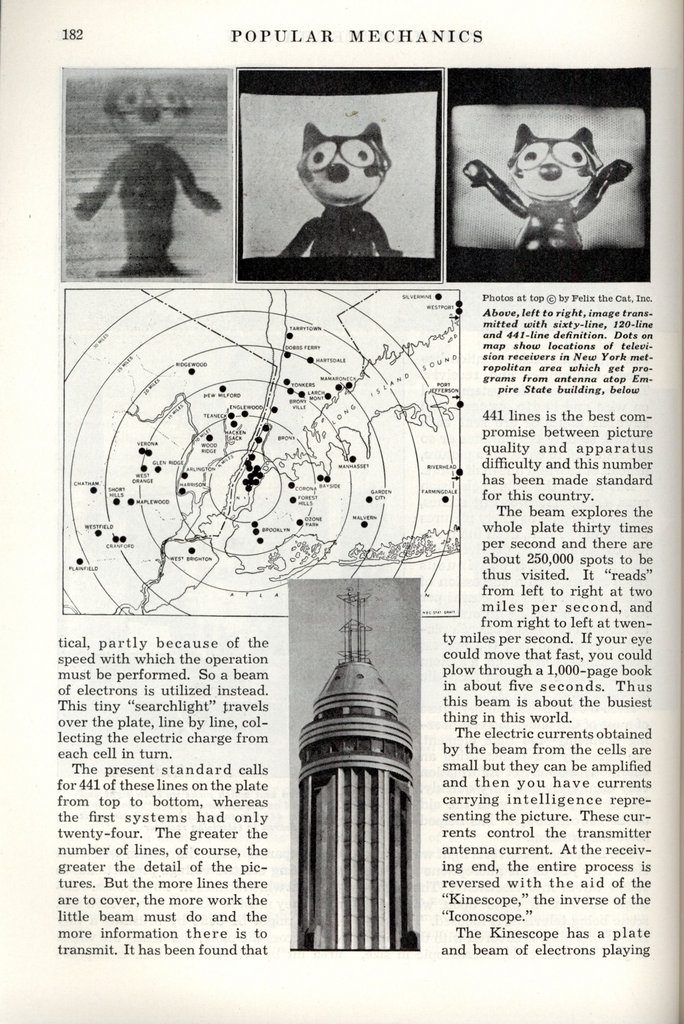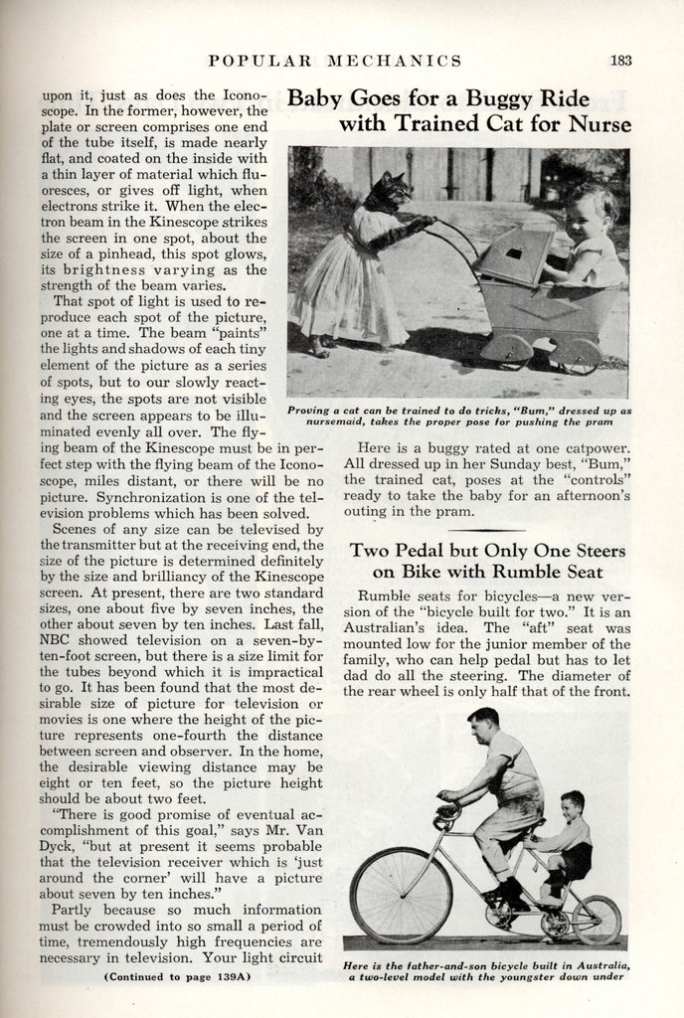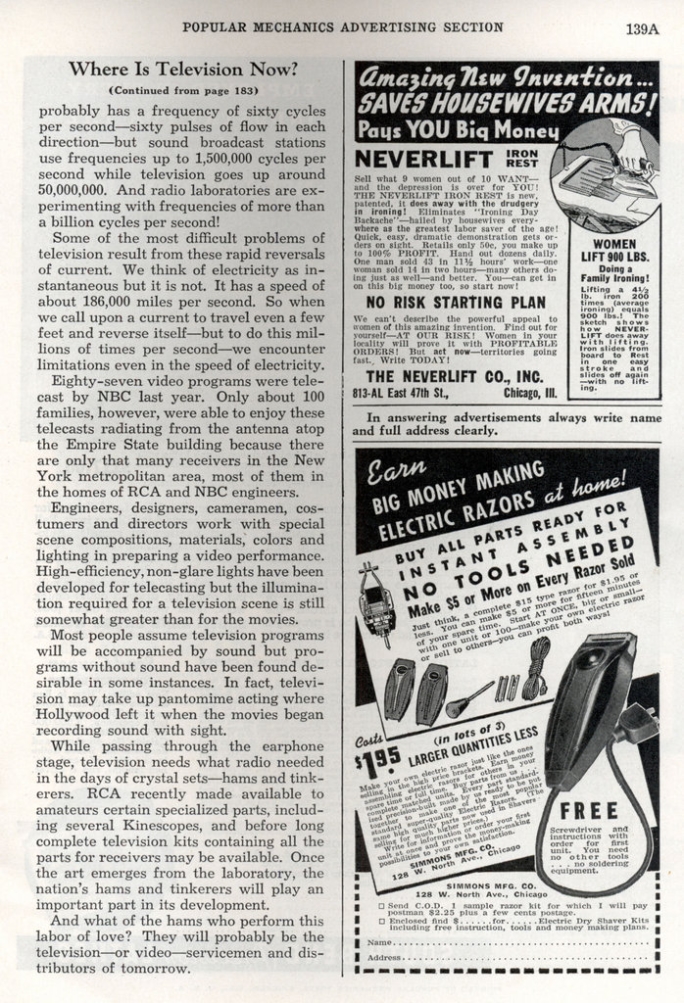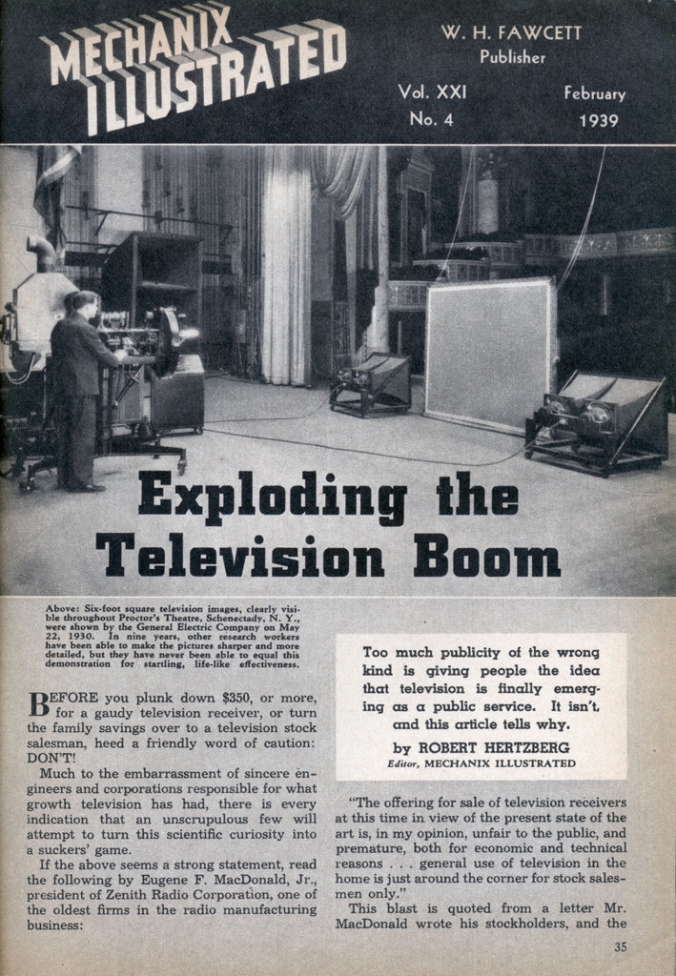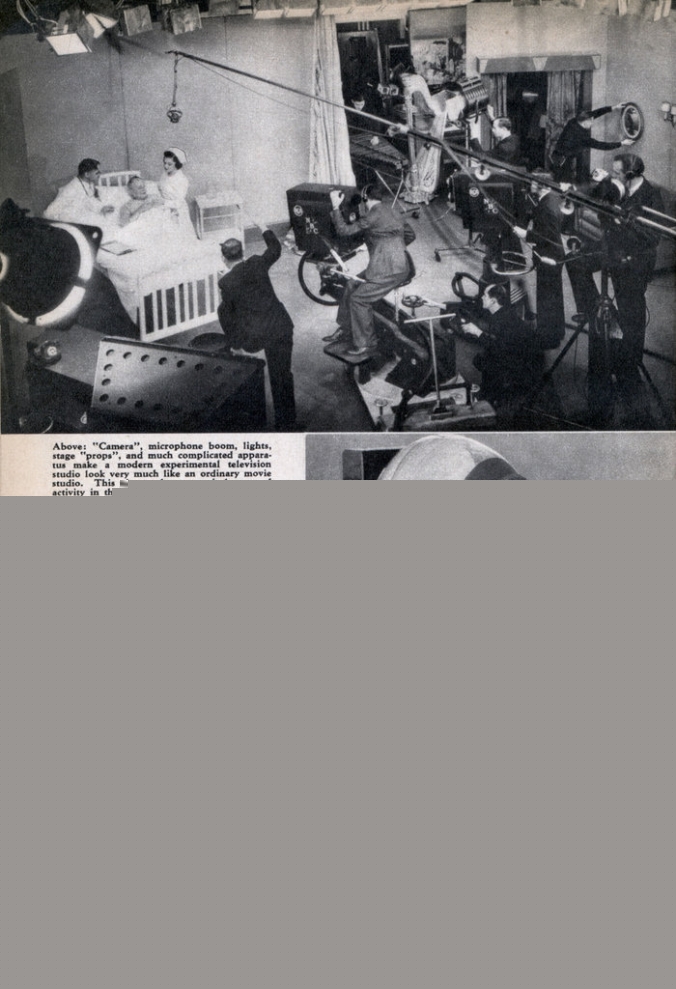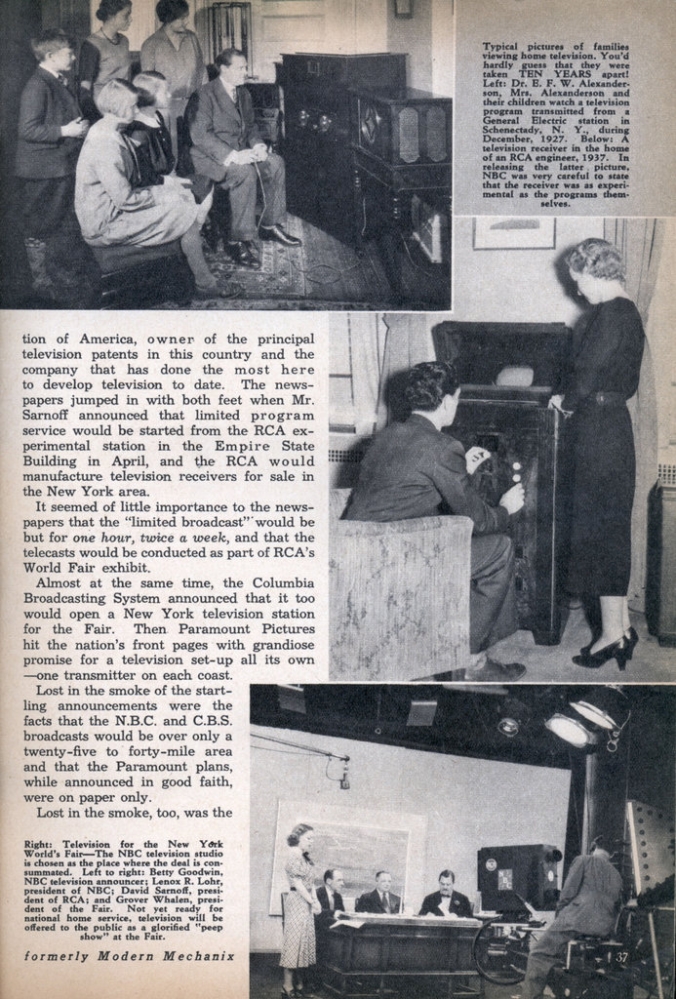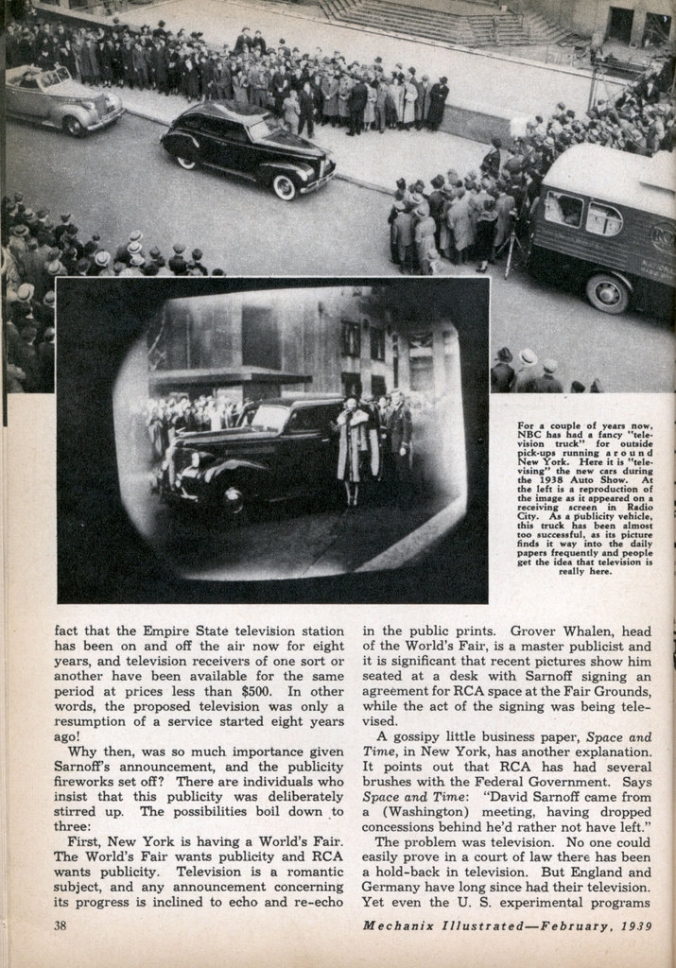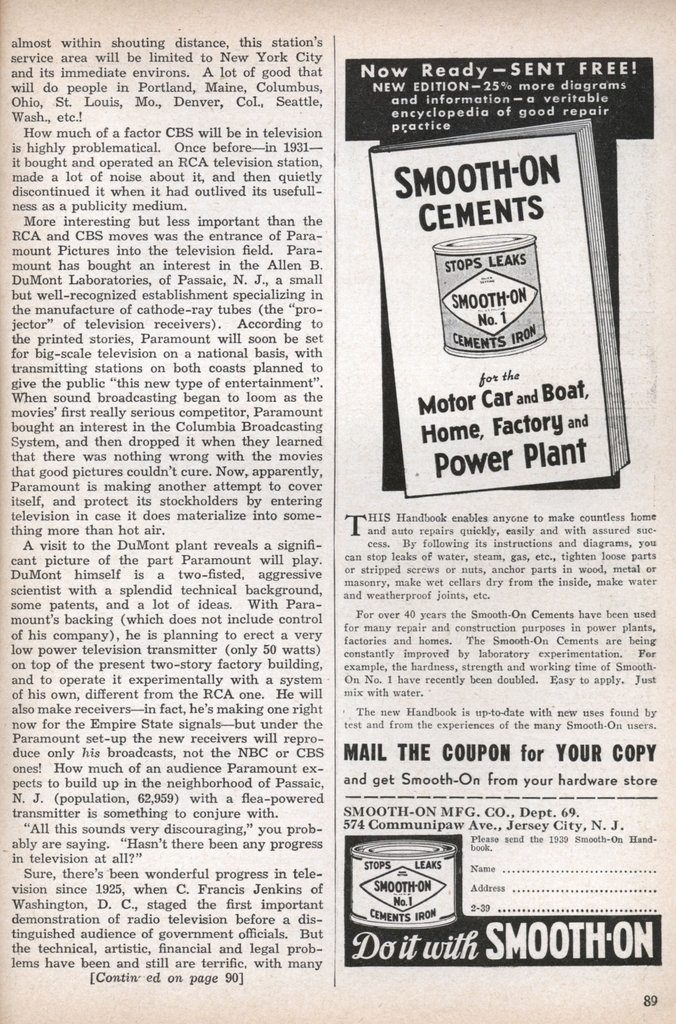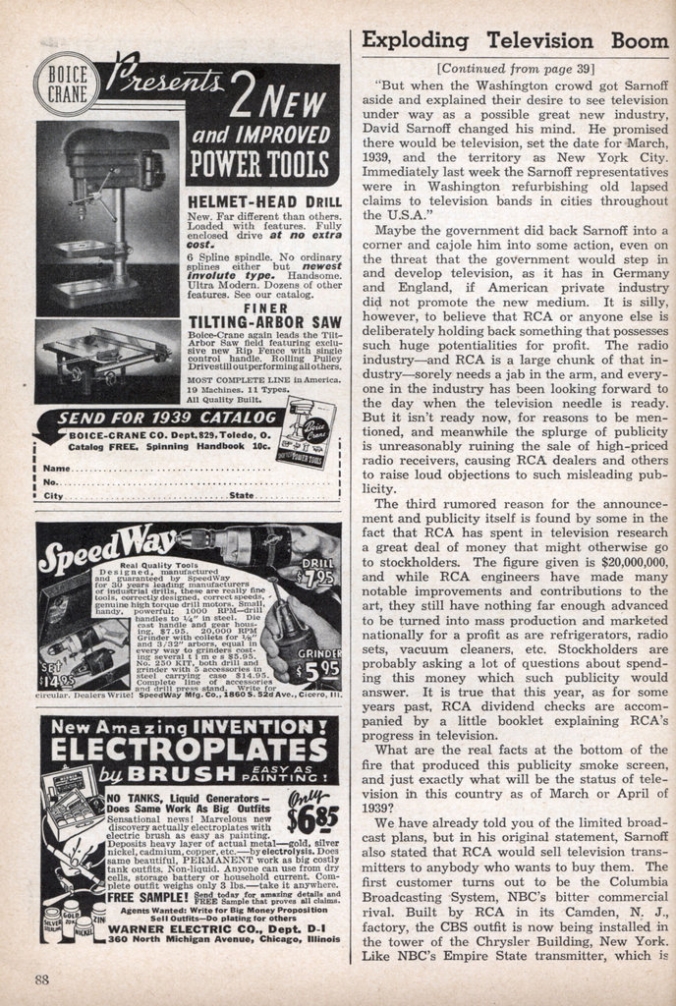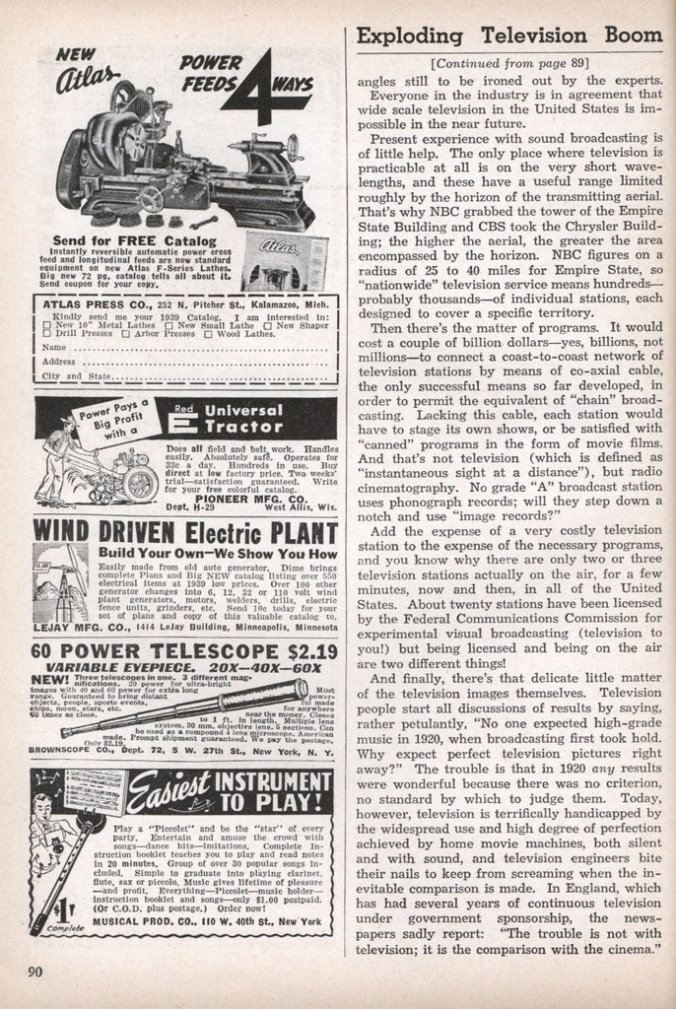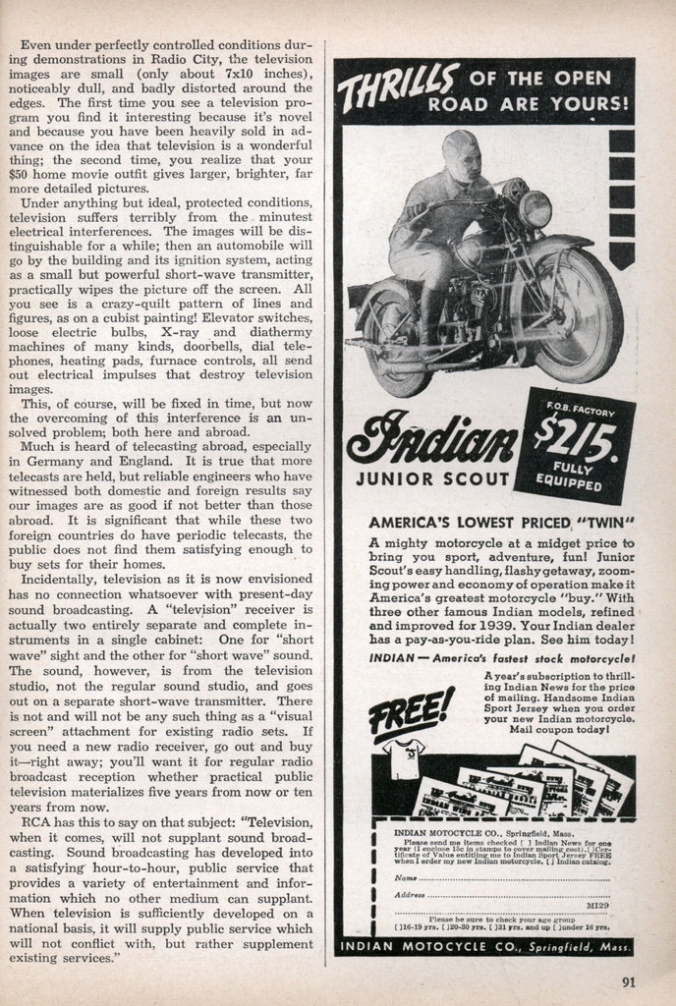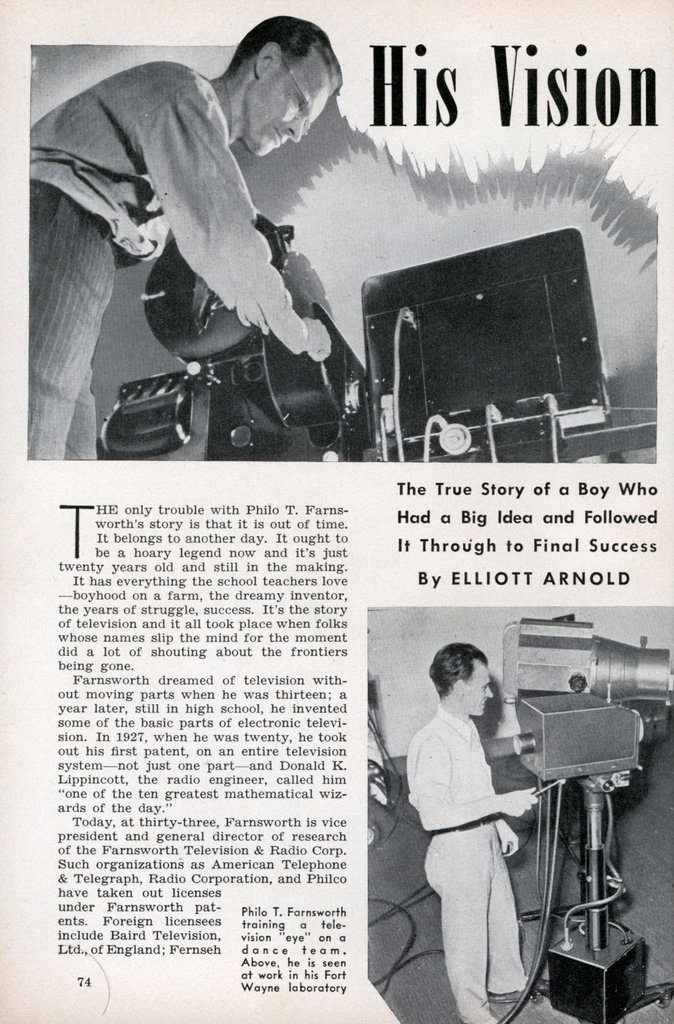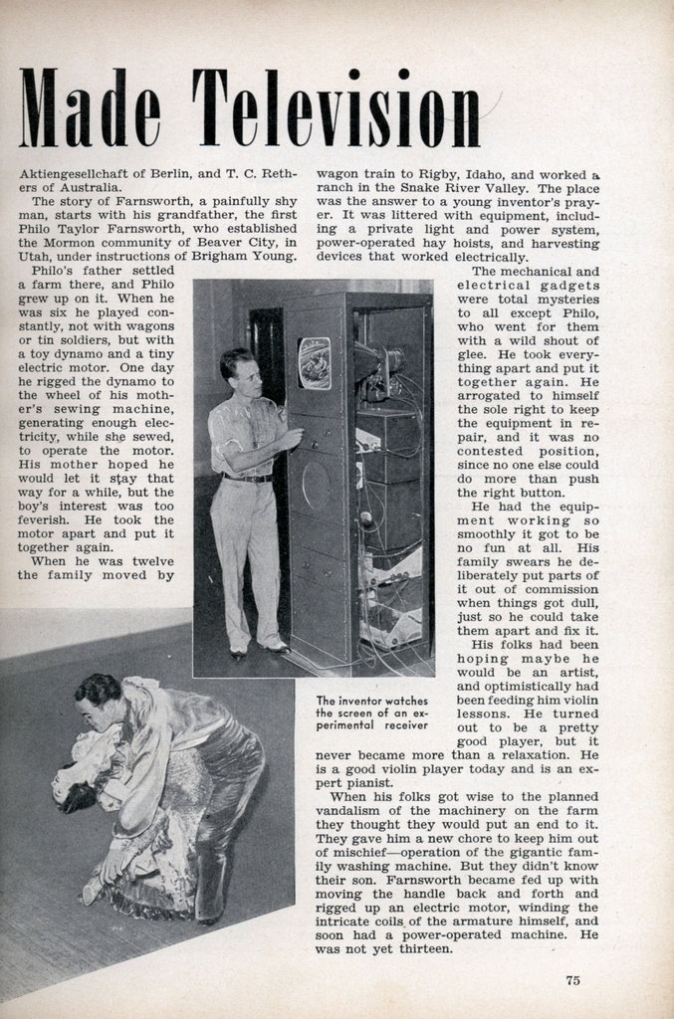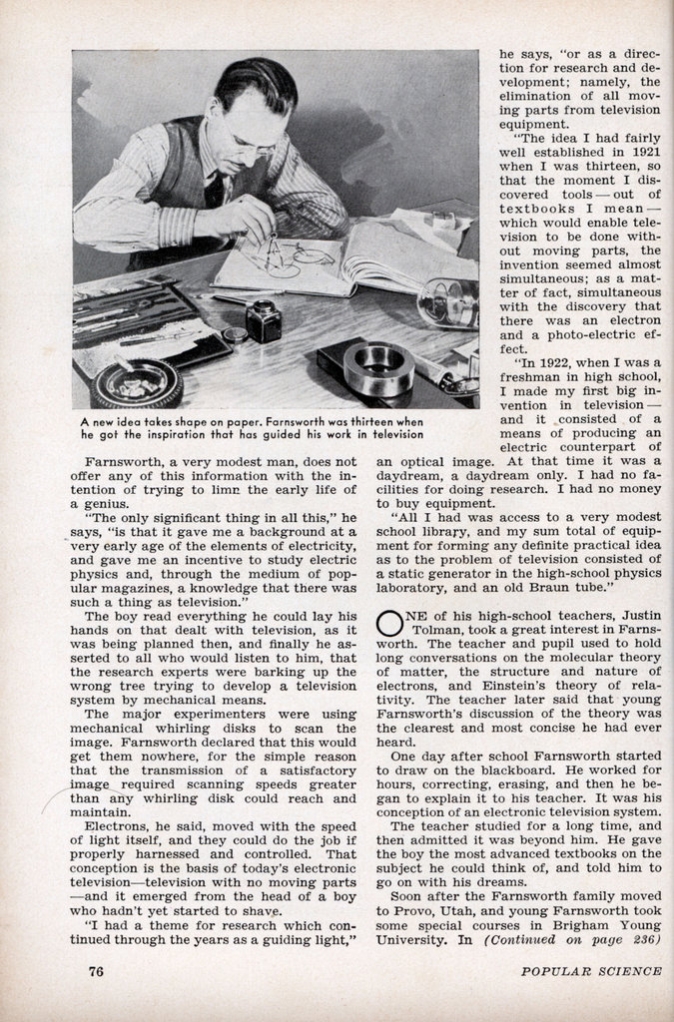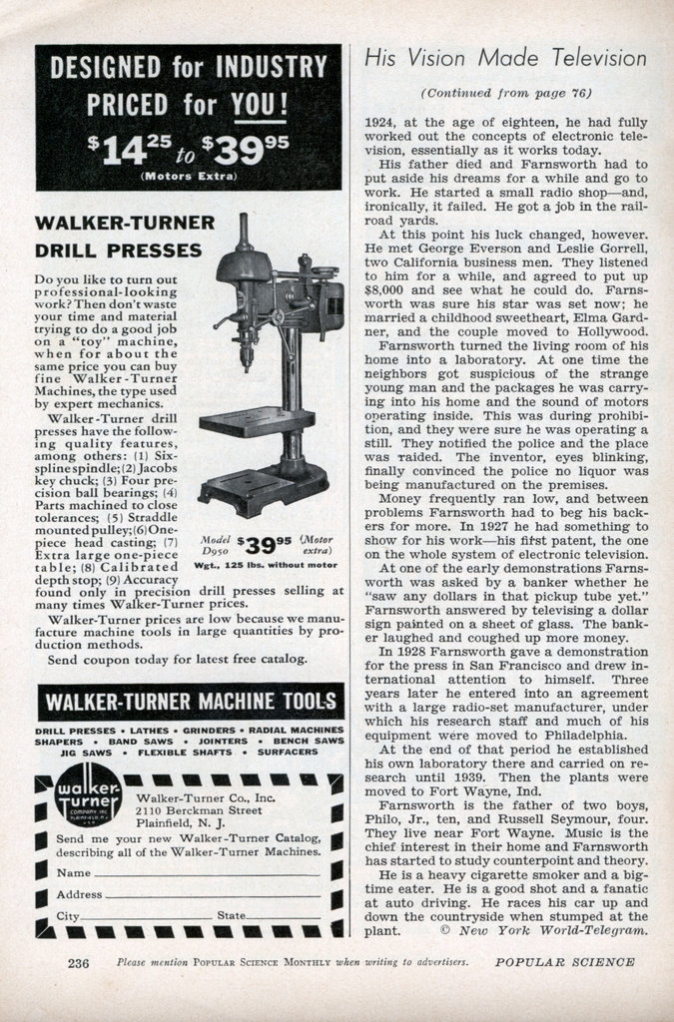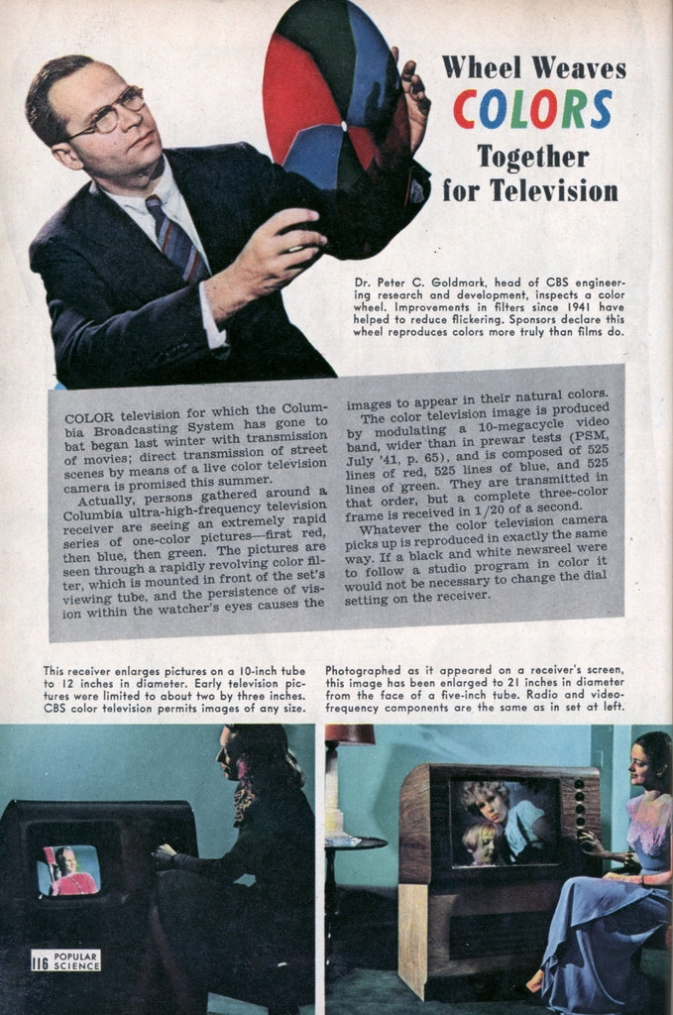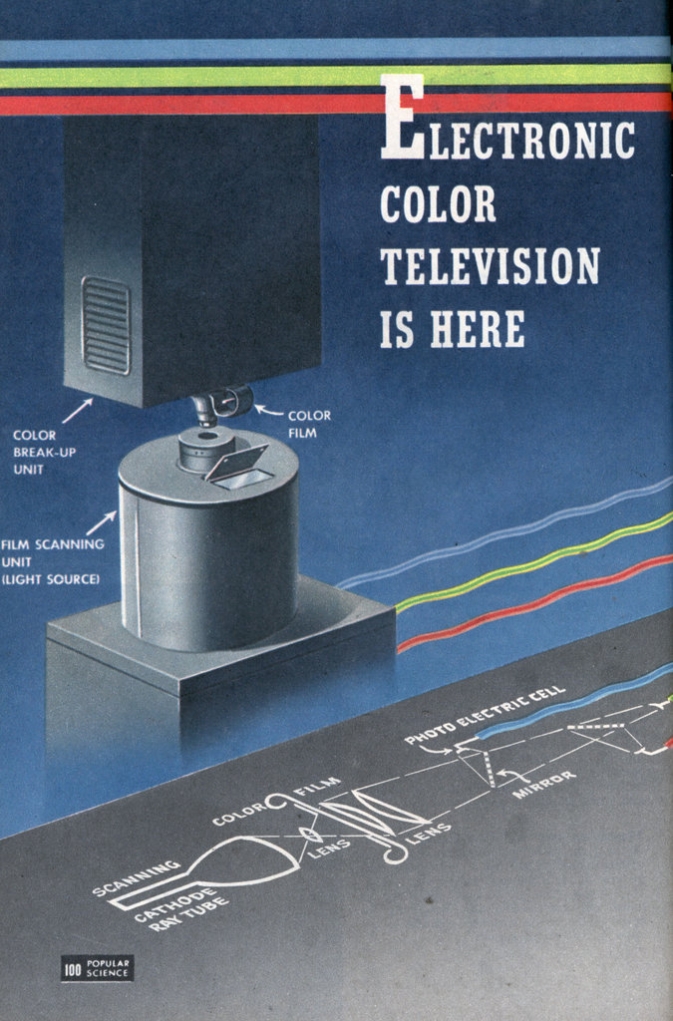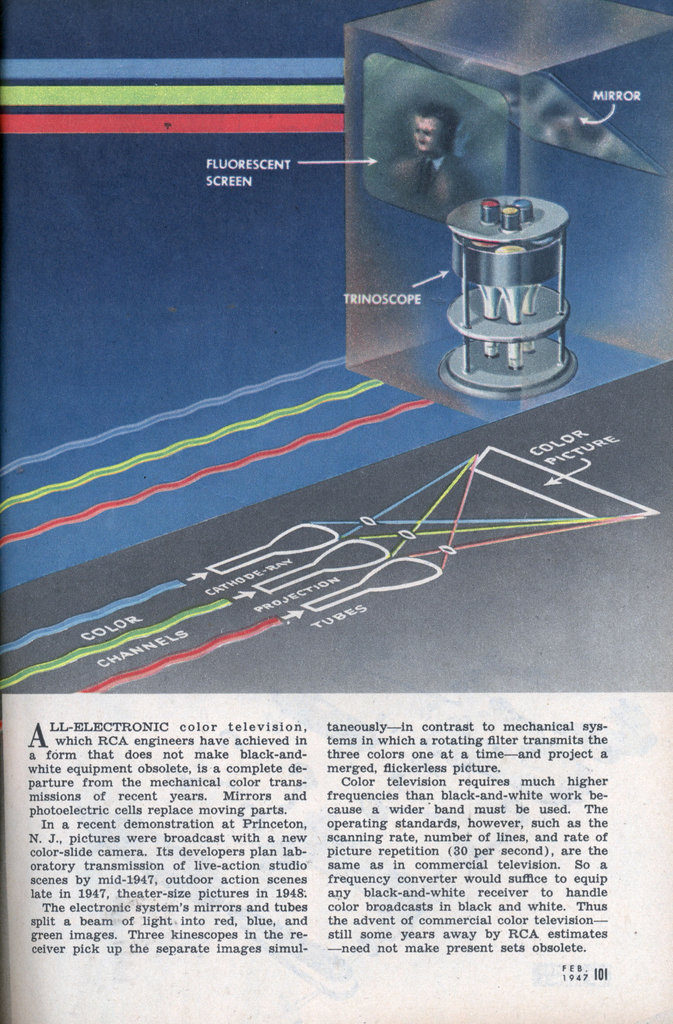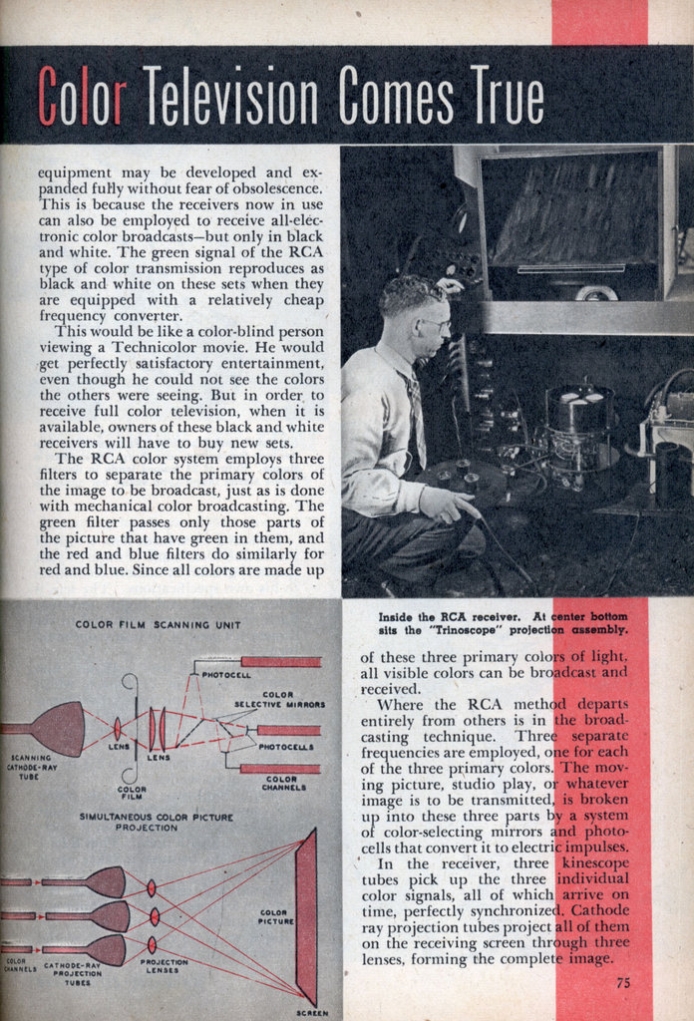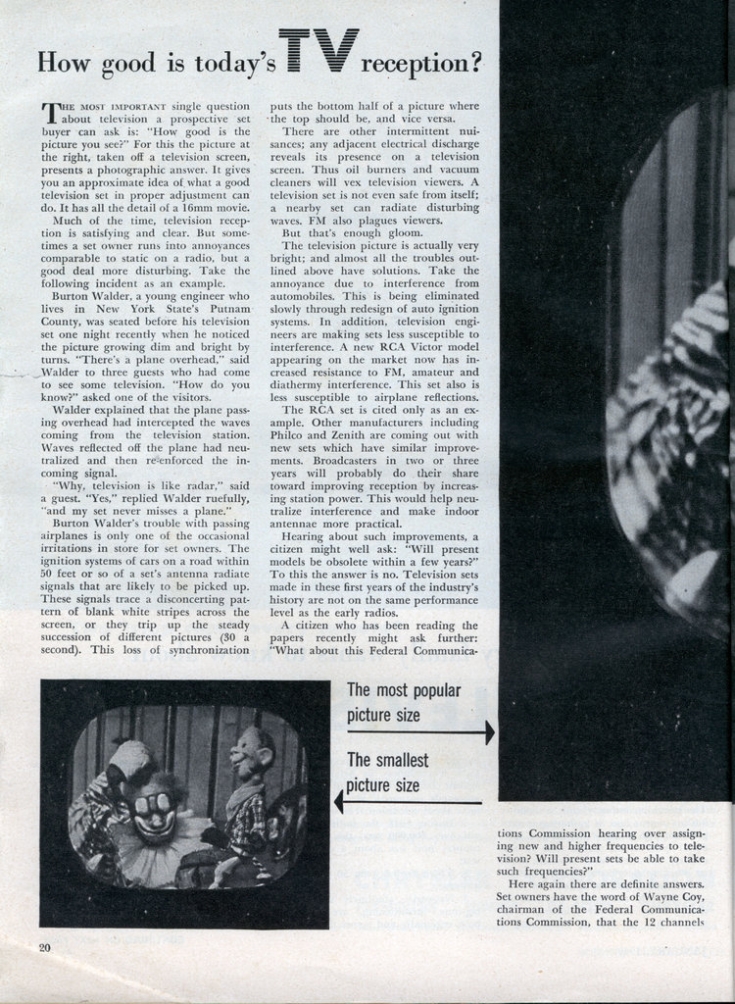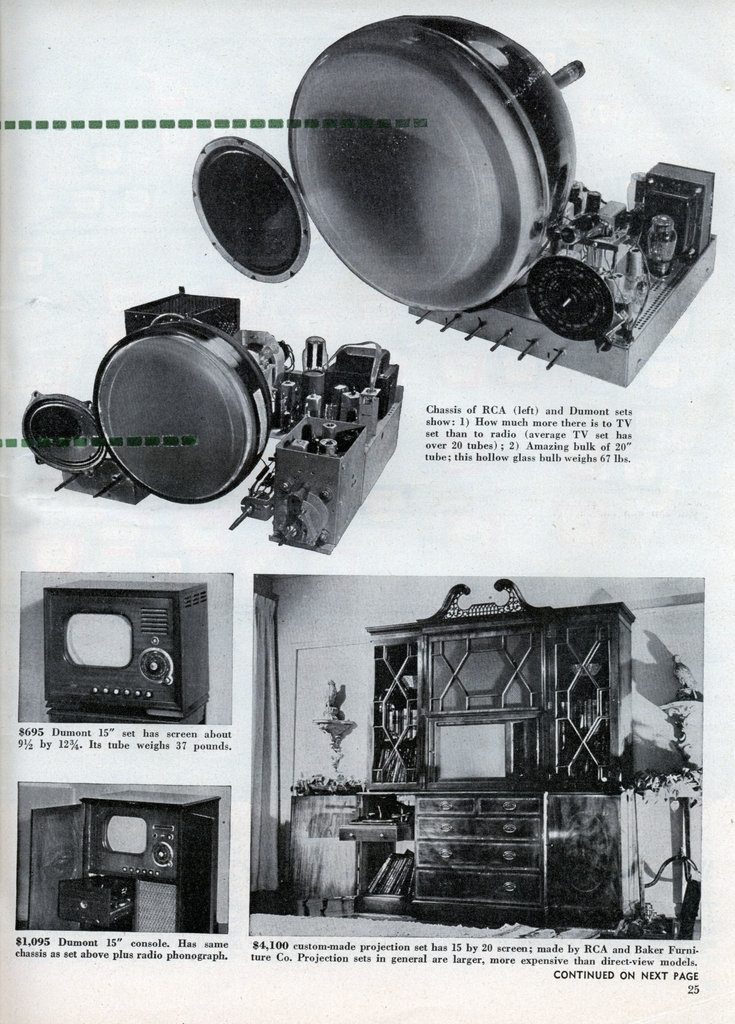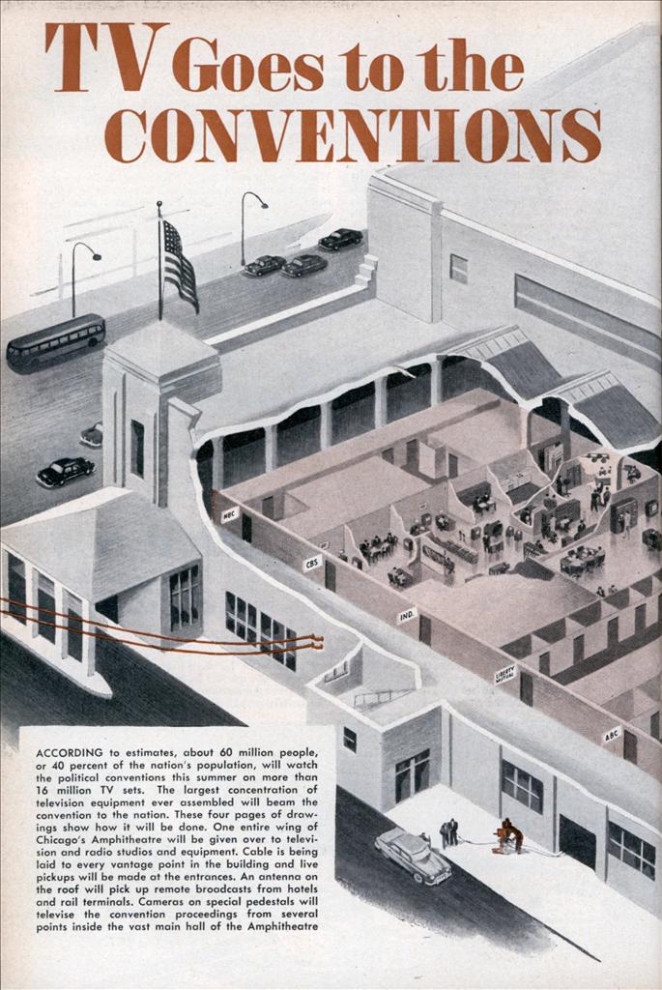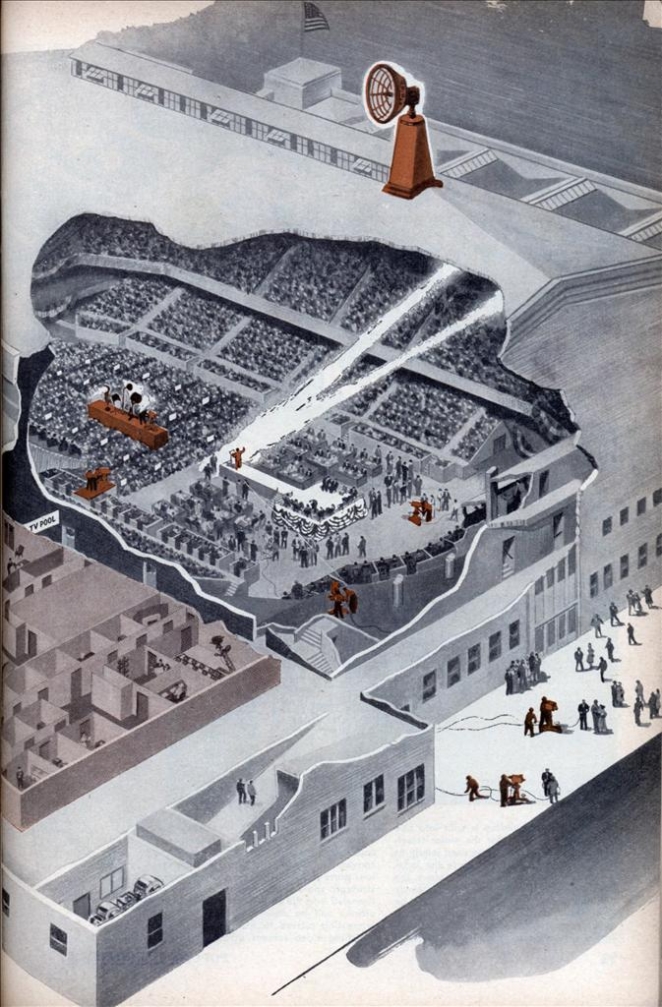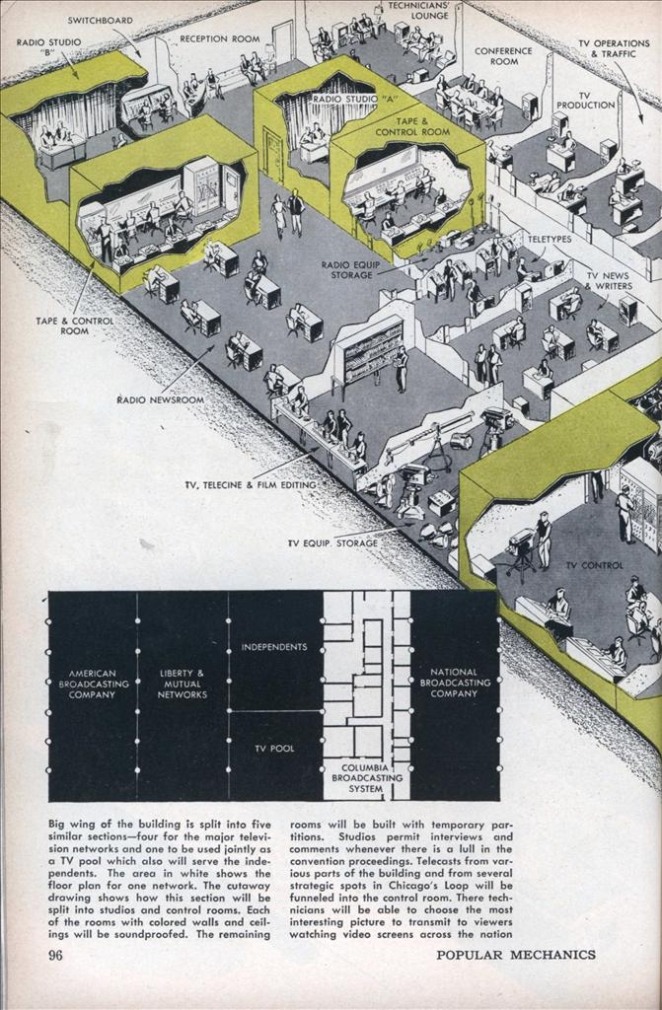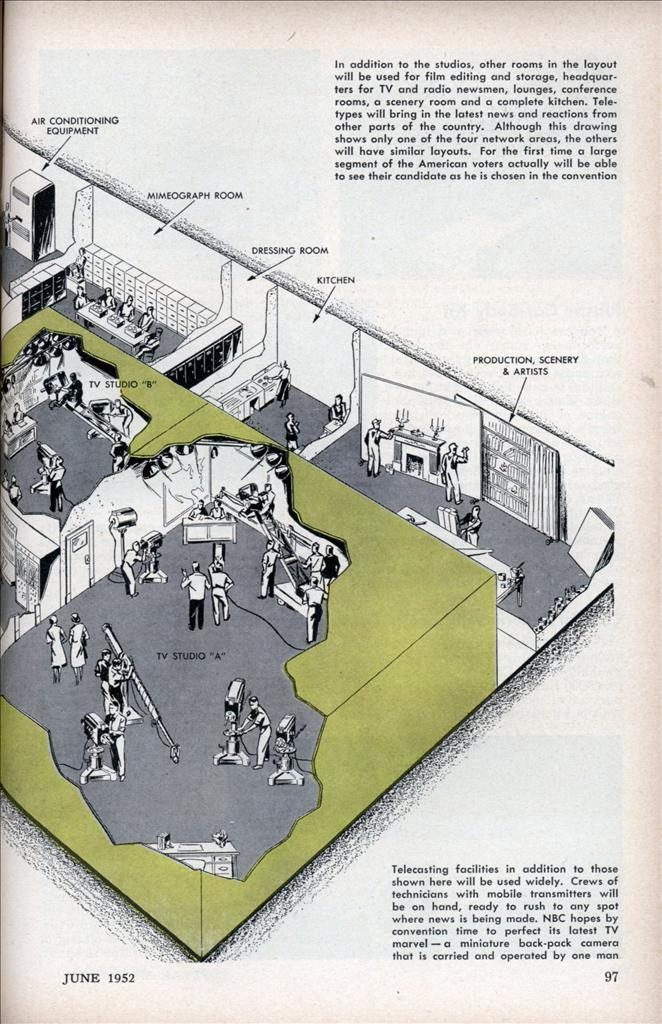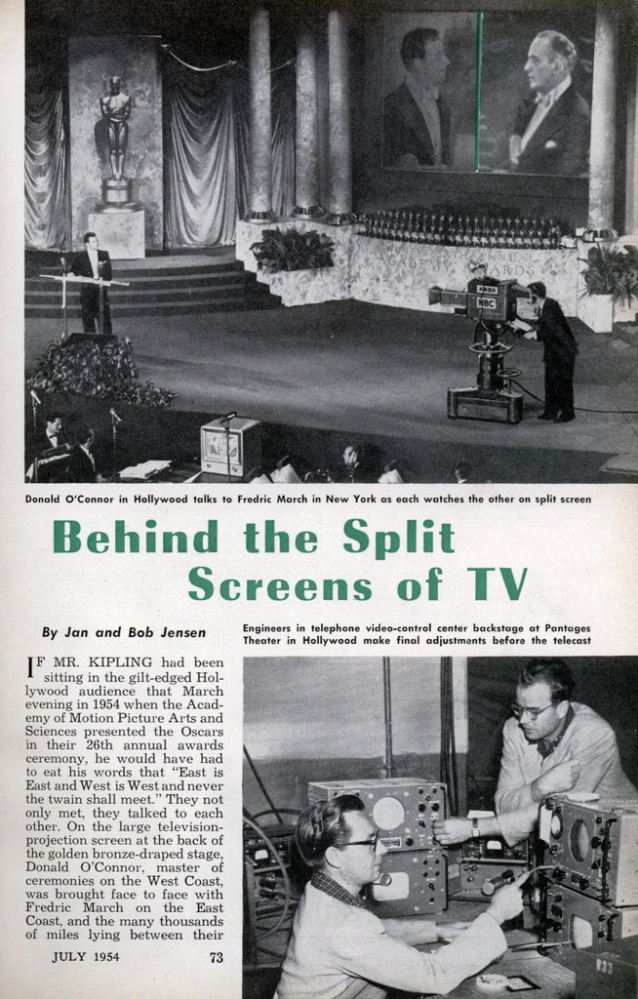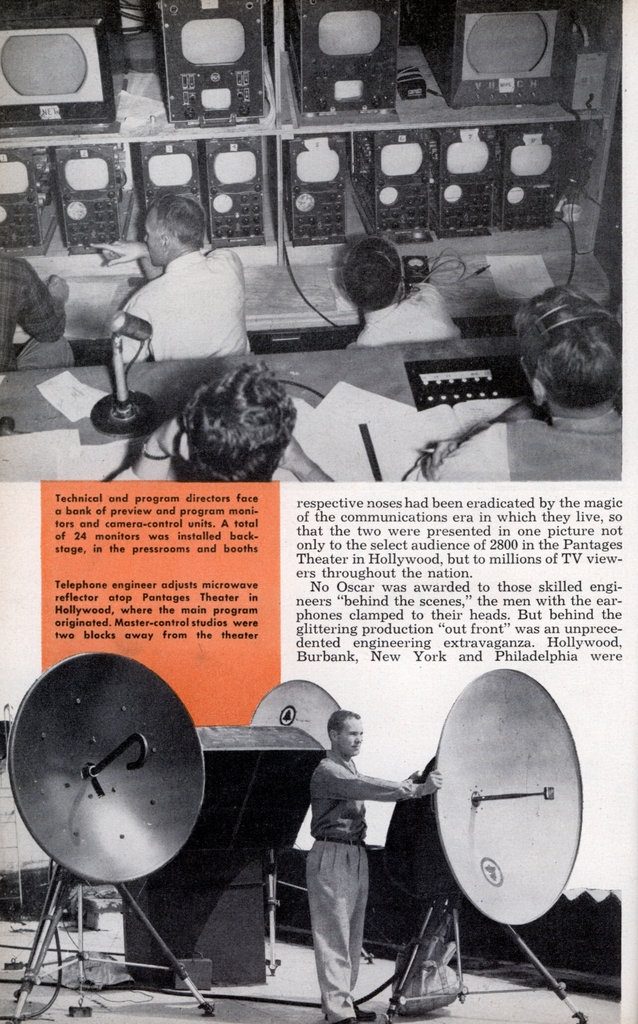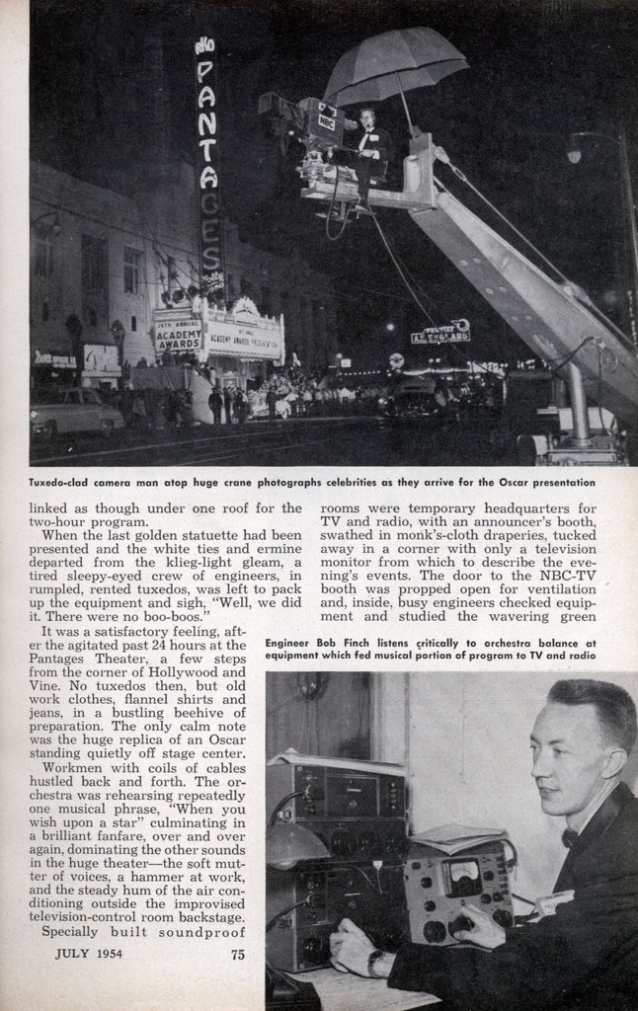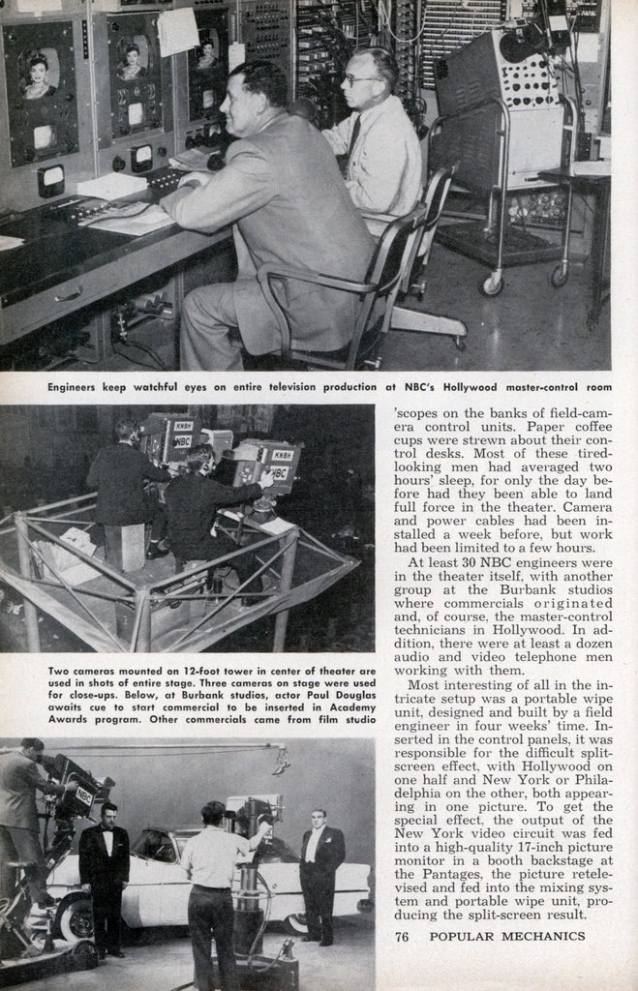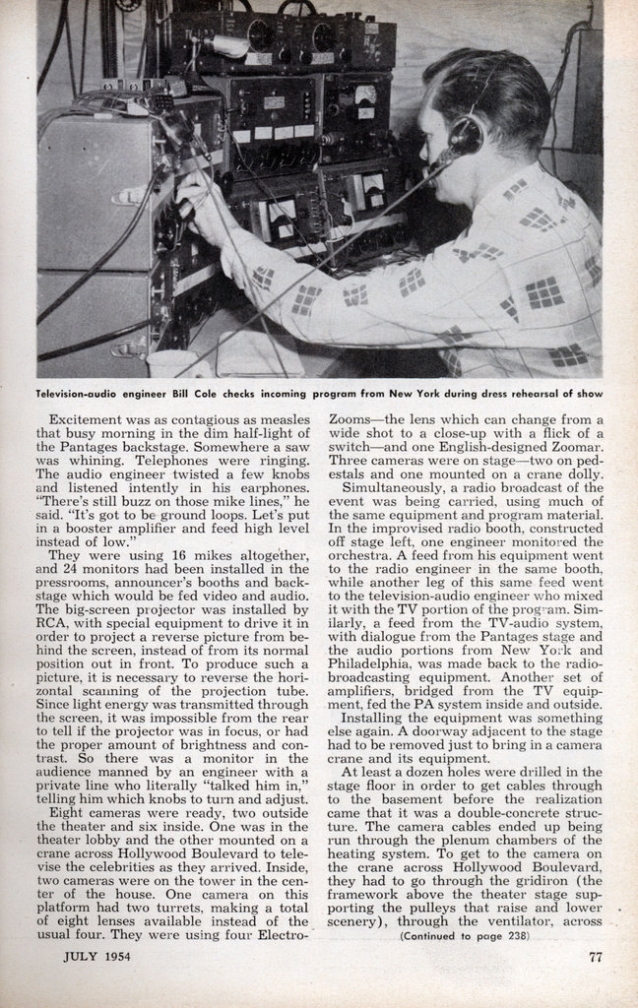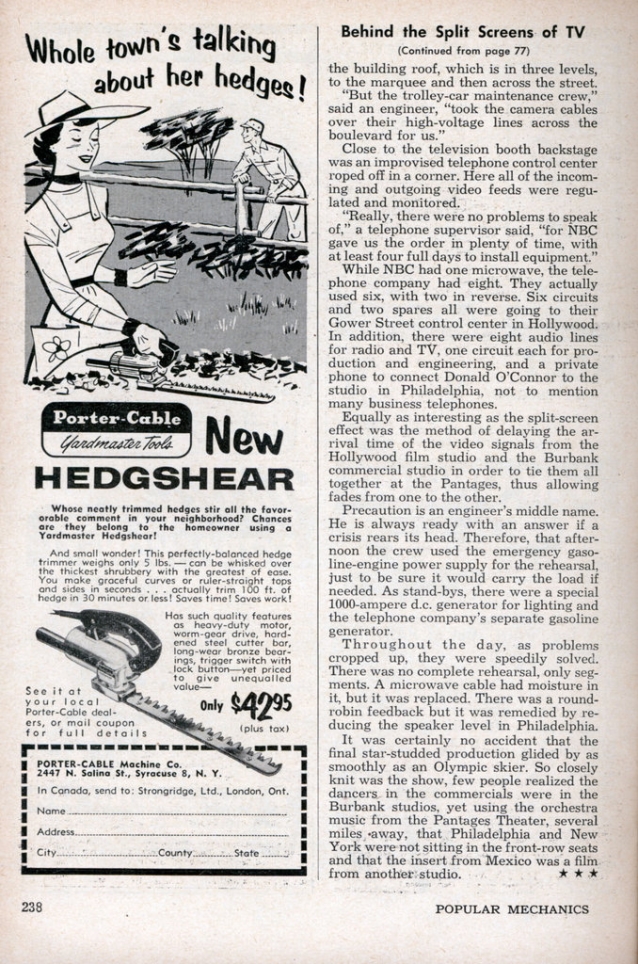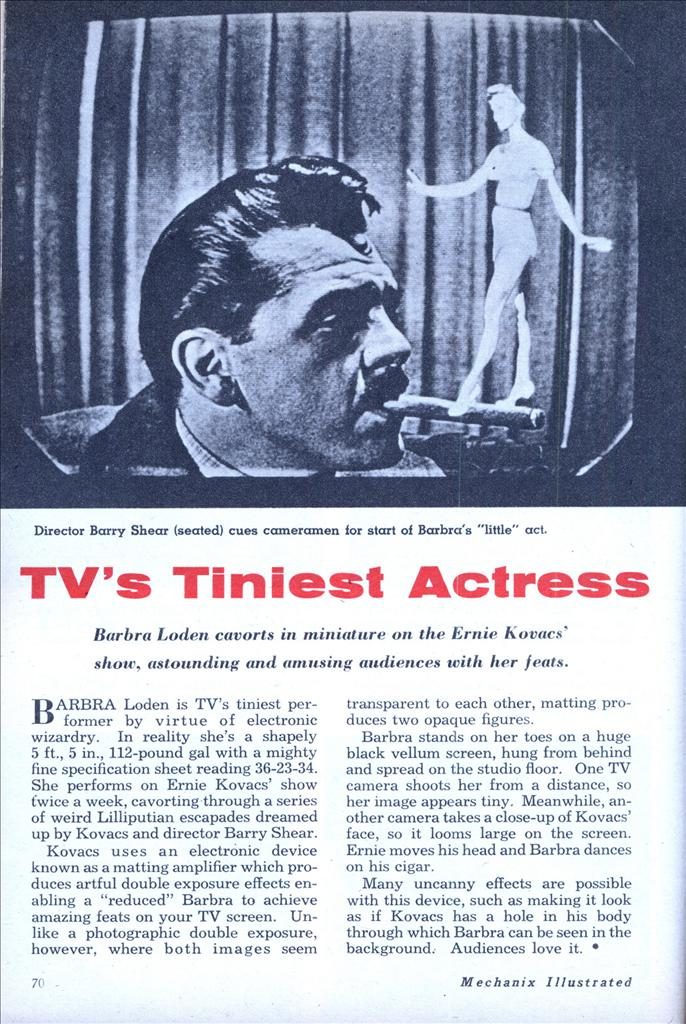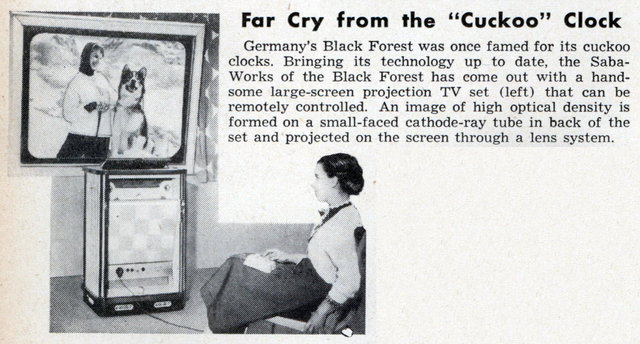- Home
- TV History
- Network Studios History
- Cameras
- Archives
- Viewseum
- About / Comments
Skip to content
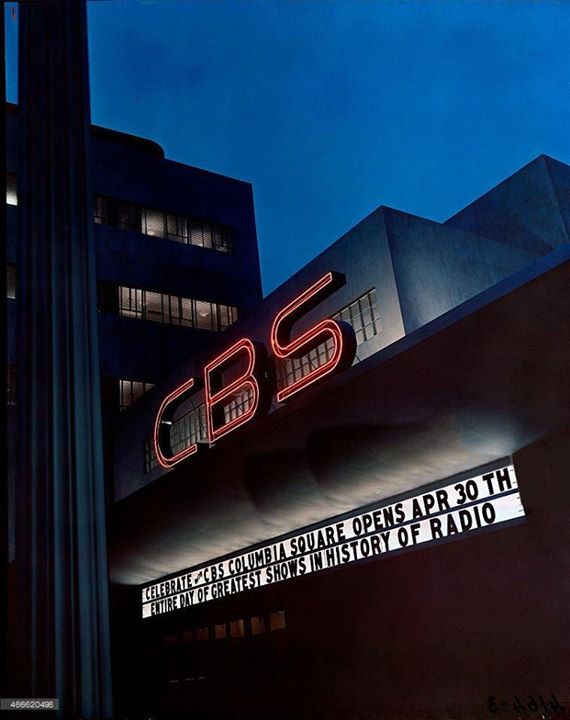

Posts in Category: Archives
1932: First American Cathode Ray Televisor
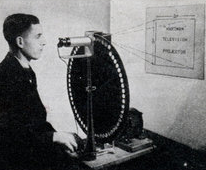
From Everyday Science and Mechanics, a few quick notes on the state of mechanical and electronic television progress, including the lens drum and diagrams of European sets.
1933, Where Television Stands Today
Suffice it to say that TV has come a long way, but this 4 page article from Modern Mechanics published in October of 1933 is quite interesting.
1936: First Philo T. Farnsworth Interview
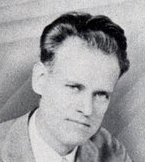
The true father of television as we know it shares his thoughts on the new medium’s future. This may be one of the earliest interviews with him, but even if it’s not, it’s interesting to see his thoughts in the context of the times in which he lived. Remember, the Great Depression was in full force in ’36.
1937: The Truth About Television
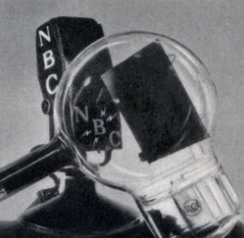
Now this is interesting! Here is a Modern Mechanix article from November 1937 that is complaining about TV. Not the abundance, but the lack! London had 5,000 sets in use while there were only 150 in New York. A lot of finger-pointing about why…leads us back to $$$. Yes, patents were an issue and no one wanted to get to ‘exposed’ before they were sure they had rights to their discoveries.
1938: Early Television Makeup
Here are two very interesting articles with great pictures to show what it took to make people look ‘normal’ in the early years. Wow!
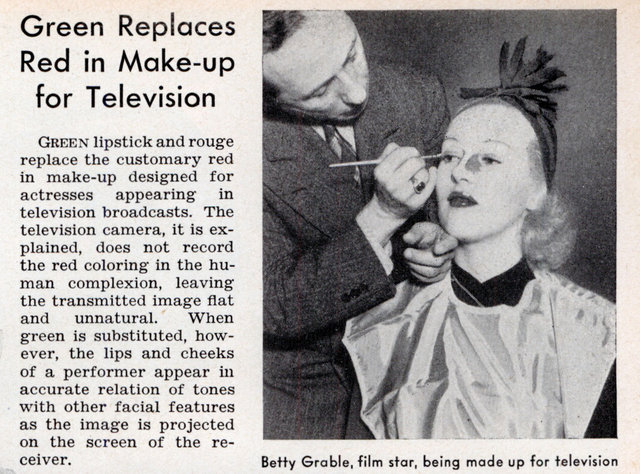
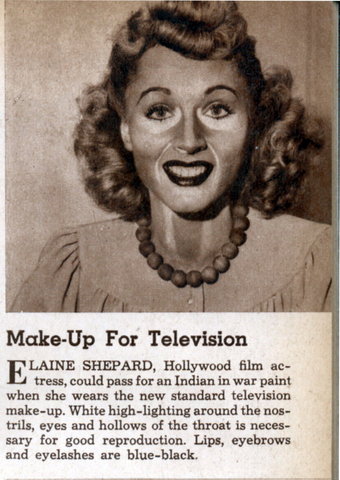
1938: Where Is Television Now?
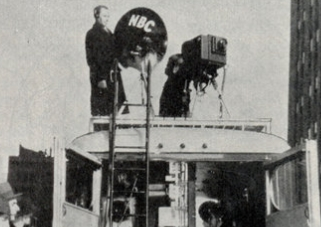
Engineering types will love this great discussion on transmission techniques. Coaxial, long wave and more is discussed here in depth in a very good article. Also, the problems from lack of standards is talked about at length.
1939: New York TV Set Receives London Signal
When I first saw this, I was very curious how this could possibly happen with no coaxial cables or repeaters. The answer is in another article on this page: “1938, Where is TV Now?” The short answer is long-wave transmission, but read the other article for the inside scoop.
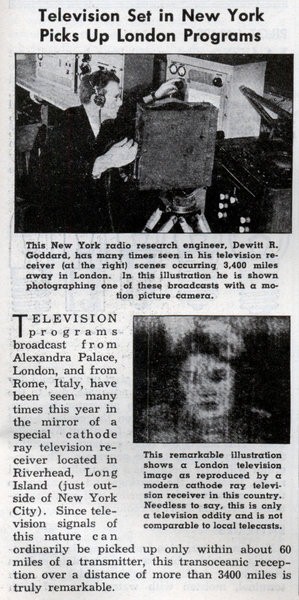
1939: Exploding the Television Boom

Wow! This nine-page article from Mechanix Illustrated is full of pictures, but the story is the biggie. TV had a lot of problems getting off the ground and a lot of those are laid out here. Sarnoff is being pushed by the government, costs of development are explored, problems with linking the coasts, and a lot more are laid out here – as well as the first daily broadcast schedules.
1940: Second Philo T. Farnsworth Interview
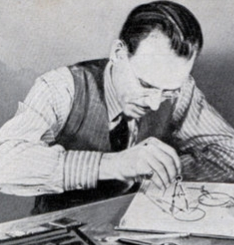
This four-page interview found Philo at age 33 and comes four years after his first major interview above. By now, he and Mr. Sarnoff are probably well acquainted.
1946: Mechanical Color Wheels or Electronic Color?
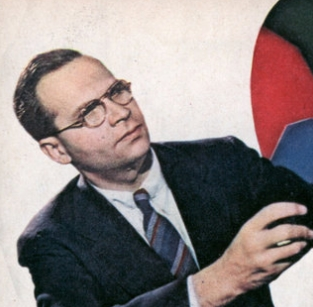
The question of the day: the choice between the CBS color wheel (sequential field system) or the RCA electronic dot matrix.
1947 Color TV Outlook
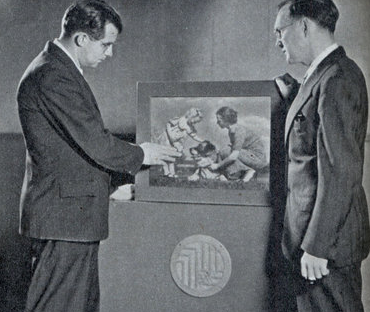
This is one of the first articles I’ve seen that starts to move the thought process away from the mechanical “spinning color disk” (CBS) concept to a more electronic (RCA) concept.
1949: What Every Family Wants To Know About TV
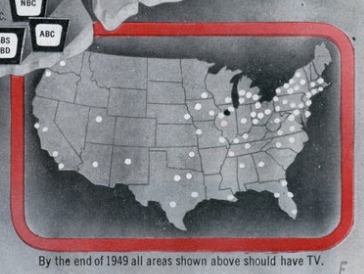
This is about as good as it gets! These 11 pages from the January 1949 issue of Science Illustrated lays it all out! From how many stations and where, to where the new coaxial cables are running, picture sizes, how many sets in use and much much more.
1952: TV Goes to the Conventions
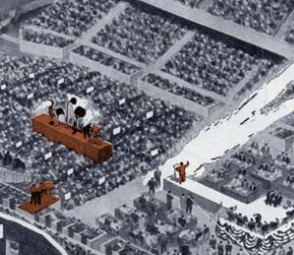
Popular Mechanics shows in detail how one of the 1952 political conventions would be televised from Chicago. These were major broadcast events, and the amount of equipment and people brought in is just amazing.
1954: Behind the Split Screens of TV

Great article on how the first coast-to-coast, split-screen telecast of the 1954 Oscar ceremony was done. Awards were handed out in New York and Los Angeles at the same time, and the full story of how it was done is all here. This should bring back a lot of memories on how much Ma Bell meant to broadcasting in those days.
1955: The DuMont Electronicam
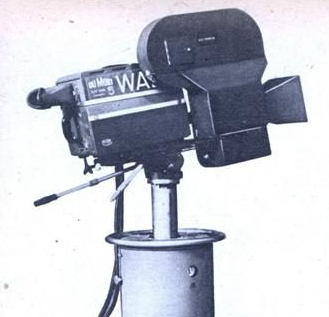
A one-page article on the DuMont Electronicam and its use on Jackie Gleason’s classic program The Honeymooners. It combined television and film.
 .
.
1955: Ernie Kovacs’ Special Effects
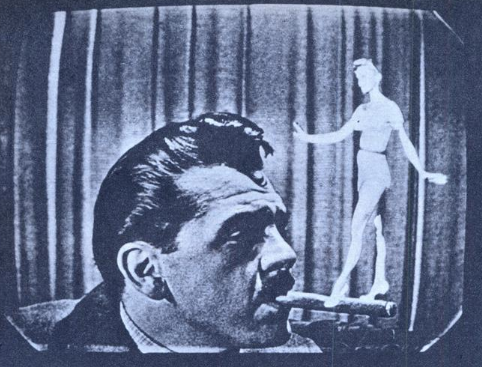
Here is a 1955 article on some of the special effects Ernie Kovacs used on his program, an early pioneer in TV magic and electronic wizardry.
1964: Watch Your Favorite Show ANY Time!
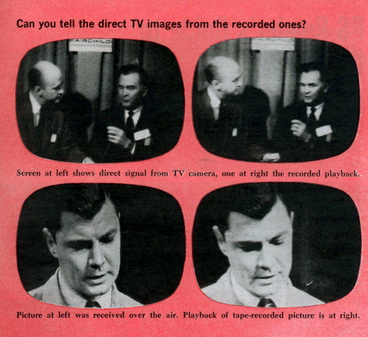
This short article in Popular Science is about the early home video tape offerings. It’s a long way from there to where we got with Beta and VHS.
April 30, 1938…Historic CBS Columbia Square Studios Dedicated
On April 30, 2016
- Archives, TV History
Here are some interesting images, and articles from the day, I think you will appreciate. Notice the date on the sign in the third photo down, is almost one year earlier at the ground breaking
